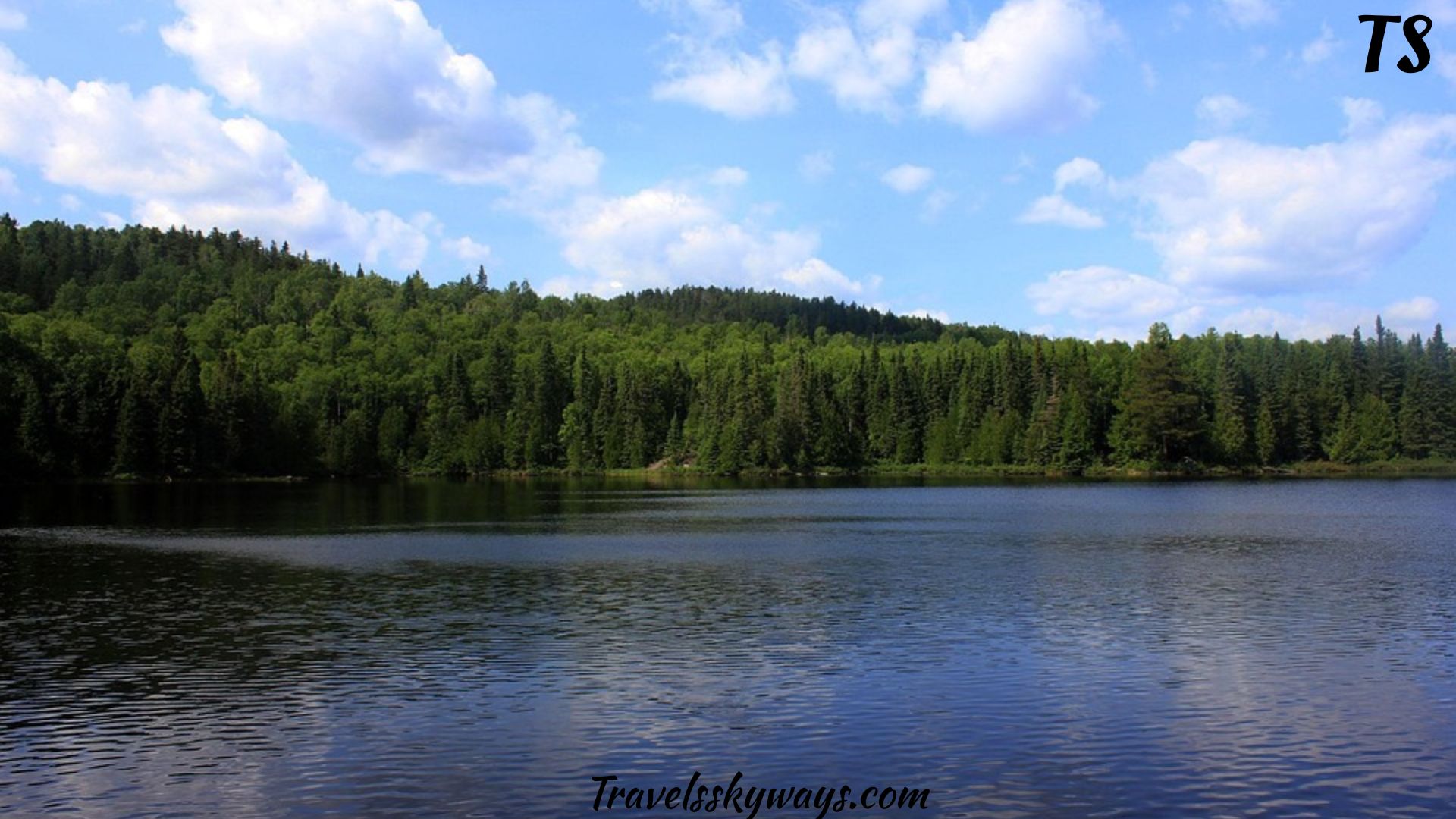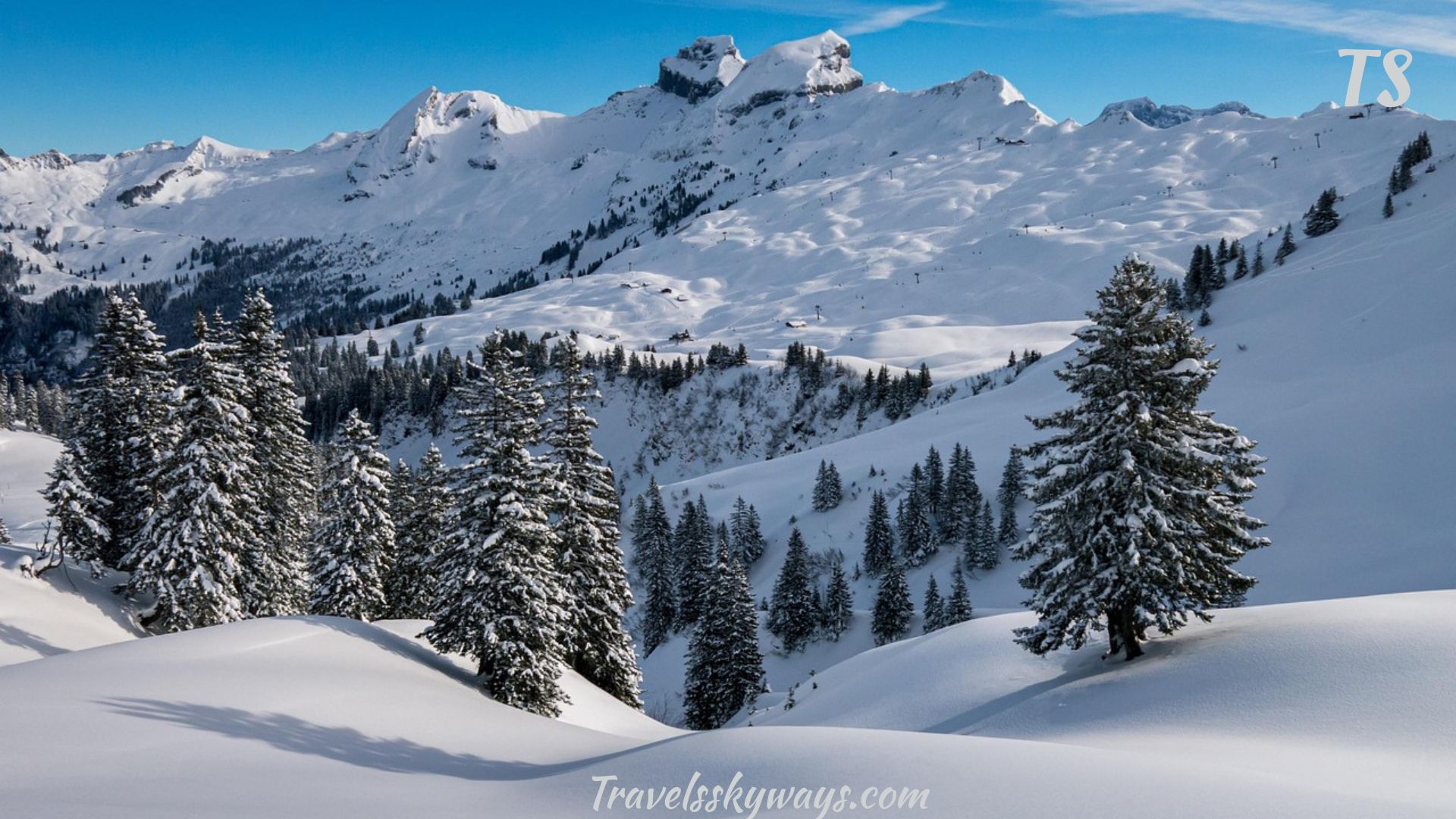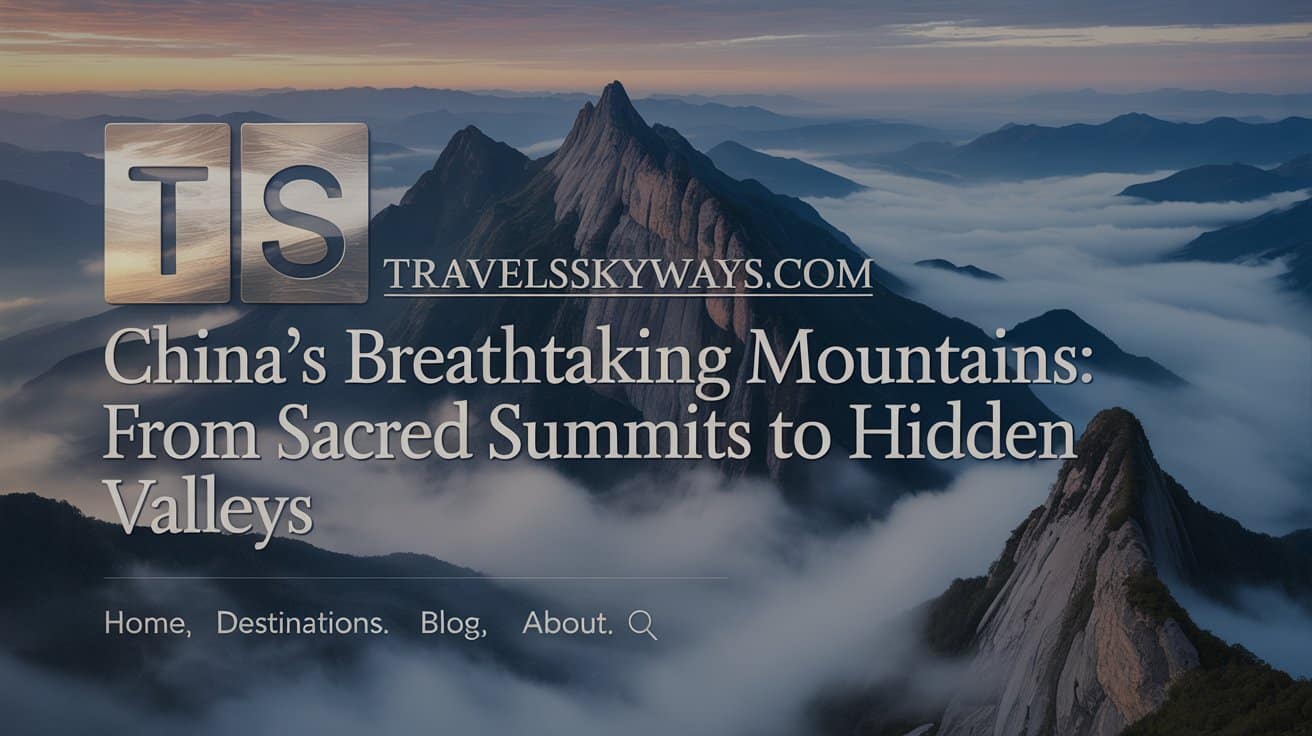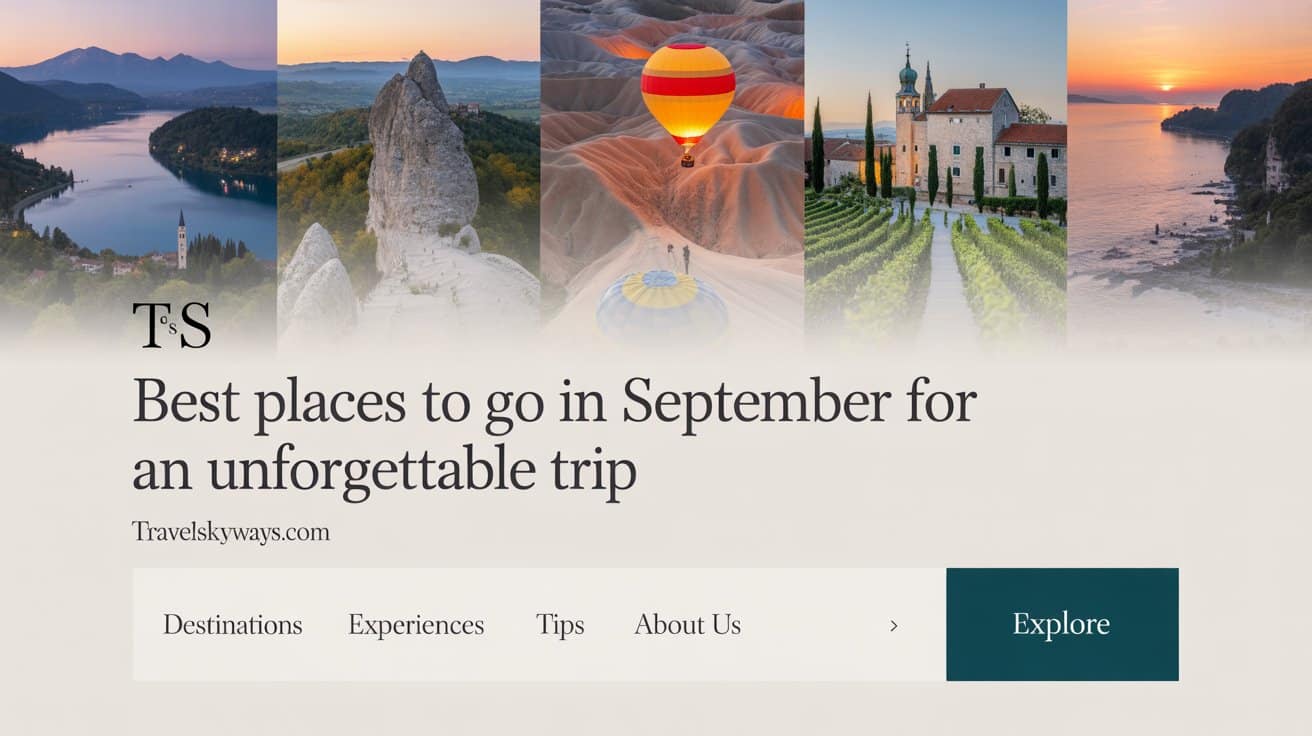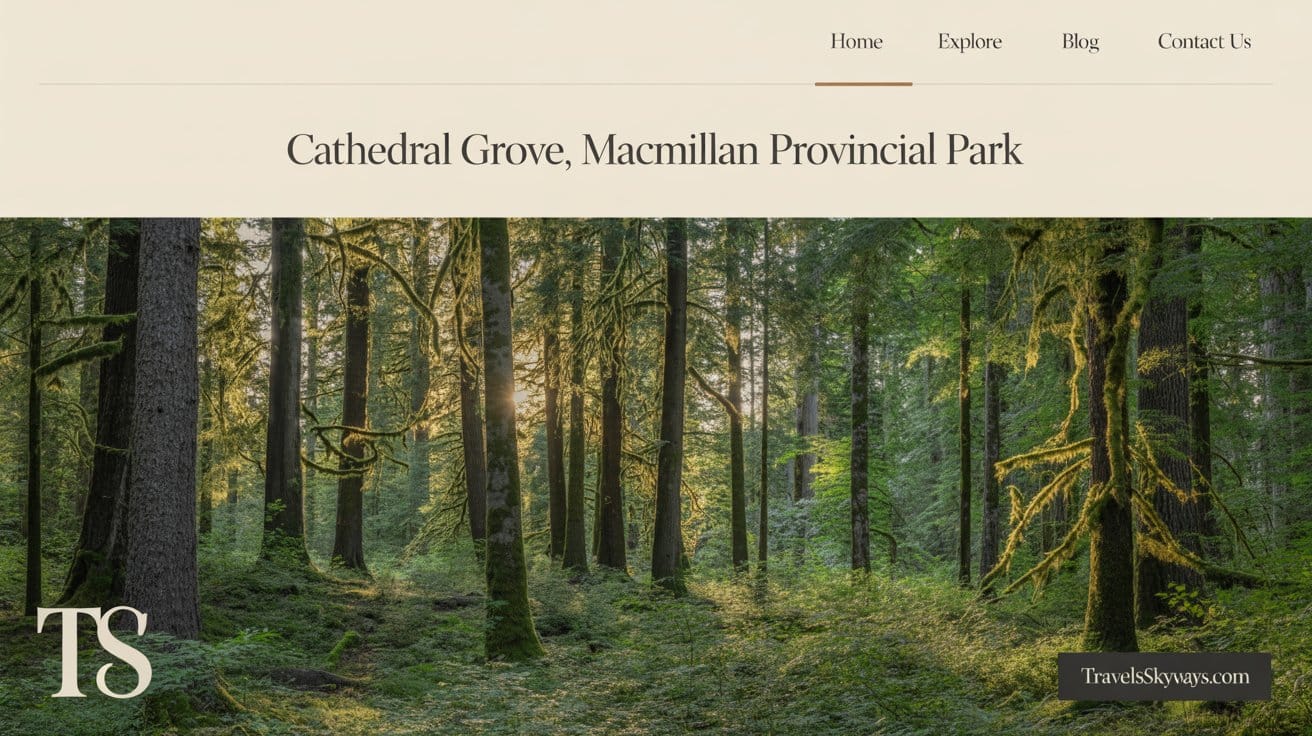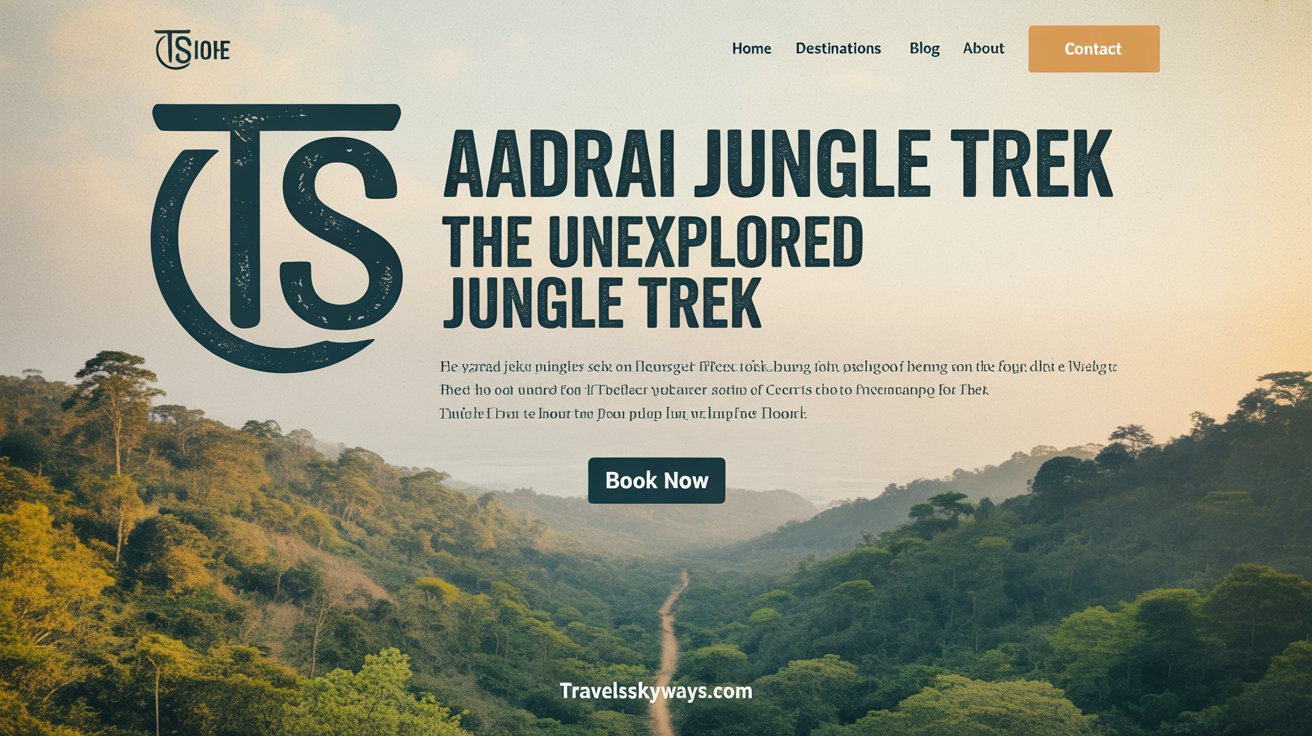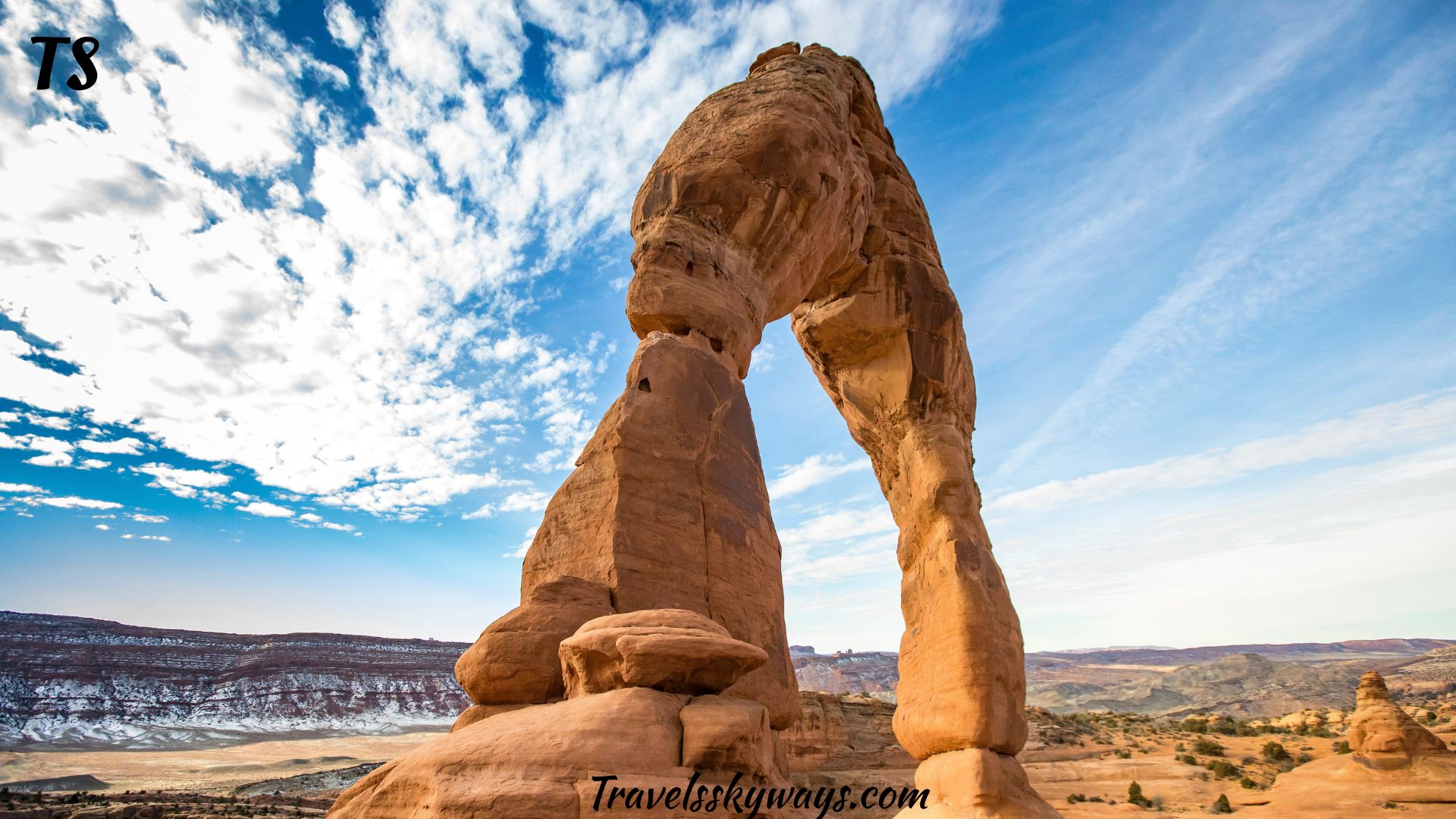
Utah travel is most often associated with the iconic “Mighty 5” national parks, namely Zion, Arches, Bryce Canyon, Canyonlands, and Capitol Reef. However, the state’s true spirit can be found in its concealed places.
In Northern, Central, and Southern Utah, there are lots of Things to do in Utah that very few tourists will ever uncover. The current post is your insider’s travel guide to Utah, which is packed with hidden treasures that are perfect to combine with the national parks’ most beautiful attractions.
I have visited almost all the places mentioned below (sometimes even more than once) and am ready to share the practical advice, seasonal tips, costs, and local atmospheres with you. Think of this as your itinerary for Utah, or just pick the sections that match your trips.
Why These Spots Deserve a Visit
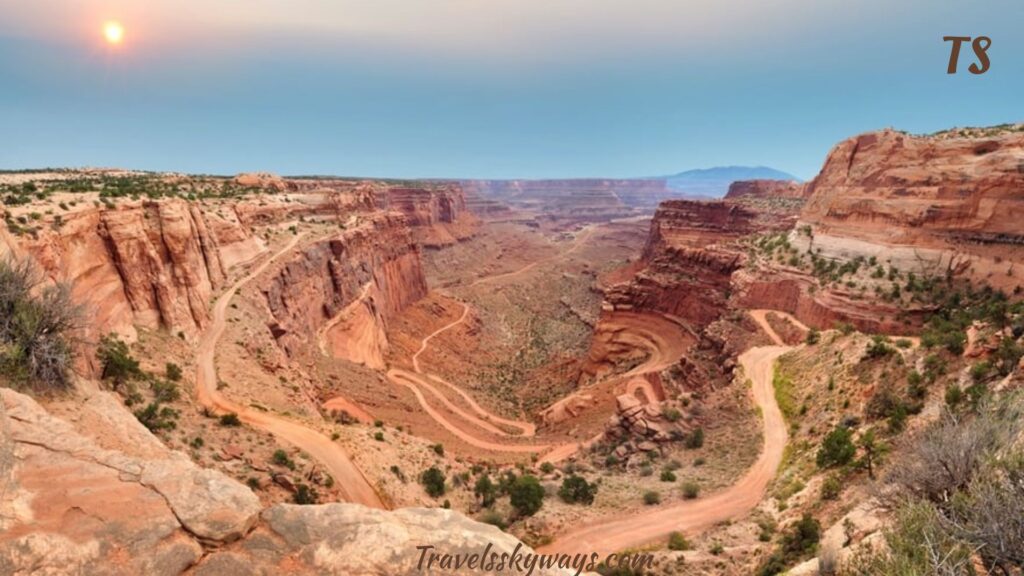
- They deepen your understanding of Utah travel beyond the mainstream.
- They connect you to desert art, pioneer history, internment memory, and native ecosystems.
- Most are family‑friendly or solo‑travel friendly—no climbing skills or gear required (though some help).
- They stretch your senses: smell lavender at Mona, float the Green River, wander poppy fields, and stand on mirrored salt pans.
Best Time to Travel & Logistical Tips
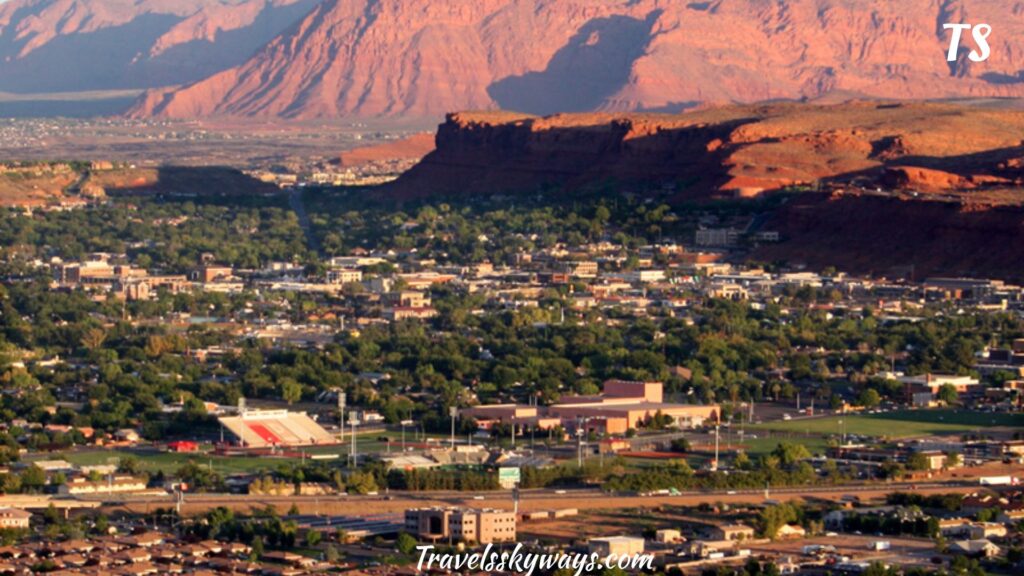
- Spring & fall are optimal across most sites (avoid summer heat and winter closures).
- Rent a high-clearance vehicle for remote gravel access (Sun Tunnels, Spiral Jetty, Dugway).
- Always carry water, sun protection, and basic first-aid.
- Respect fragile ecosystems—stay on trails and obey signage, especially in wildflower areas.
- Mix urban with rural: use Salt Lake City or St. George as bases and day-trip outward.
Things to do in Northern Utah
1. Mantua Poppy Fields, Utah
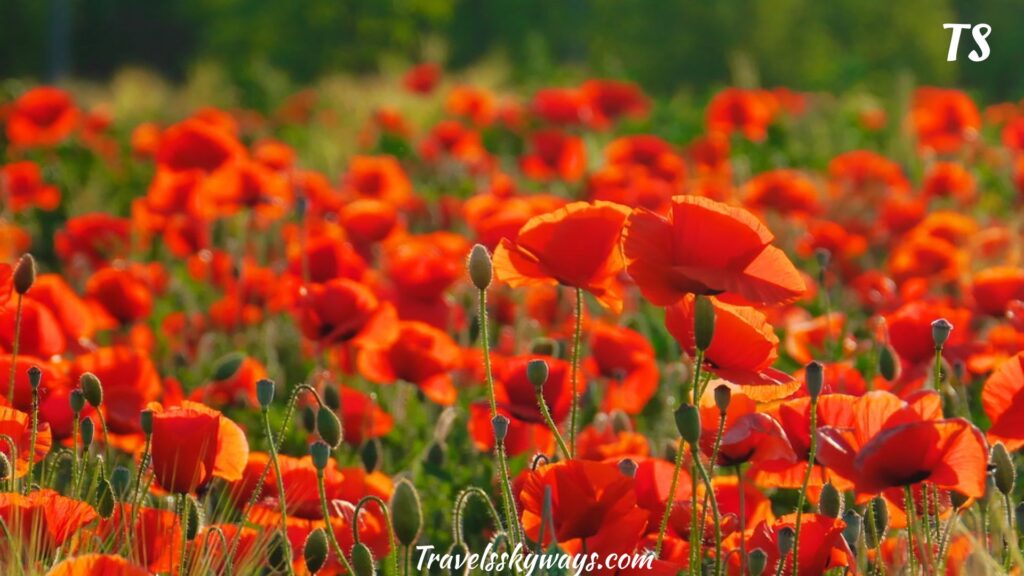
Mantua Poppy Fields in Northern Utah aren’t just scenic—they’re breathtaking. Picture rolling hills washed in vibrant red poppies, set against the rugged backdrop of the Wasatch Mountains.
Every early to mid-June, these wildflowers explode into bloom, transforming the quiet town of Mantua into a surreal, almost dreamlike landscape.
Locals say the poppies descend from seeds brought by Danish settlers in the 19th century—a living piece of history you can literally walk through.
The best part? You don’t need a strenuous hike to reach them. Just park near Box Elder Campground, and within minutes you’ll be wandering among fields so bold and brilliant they feel straight out of a postcard.
Whether you’re a casual traveler, a photographer, or someone who just needs to feel inspired again, the Mantua Poppy Fields deliver a rare kind of magic—one that’s fleeting, unforgettable, and absolutely worth the drive.
Quick tips & facts
- Best time: mid to late June (the bloom window is short).
- Cost: Camping at Box Elder starts around $22/night.
- How to get there: From I‑15 I-15 to exit 362 (Brigham City), then follow the signs on Highway 89 toward Mantua.
- Caveats: Parking is limited and sometimes ticketed—obey signs.
Traveler insight: I drove north early one June morning, arriving just before sunrise. The valley glowed a soft red. I had to wait for a few tour buses to clear out, but once I found a quiet patch, I lay down among the petals and watched bees hum over blooms. It felt like stumbling into a secret garden.
2. Snowbasin Resort, Utah
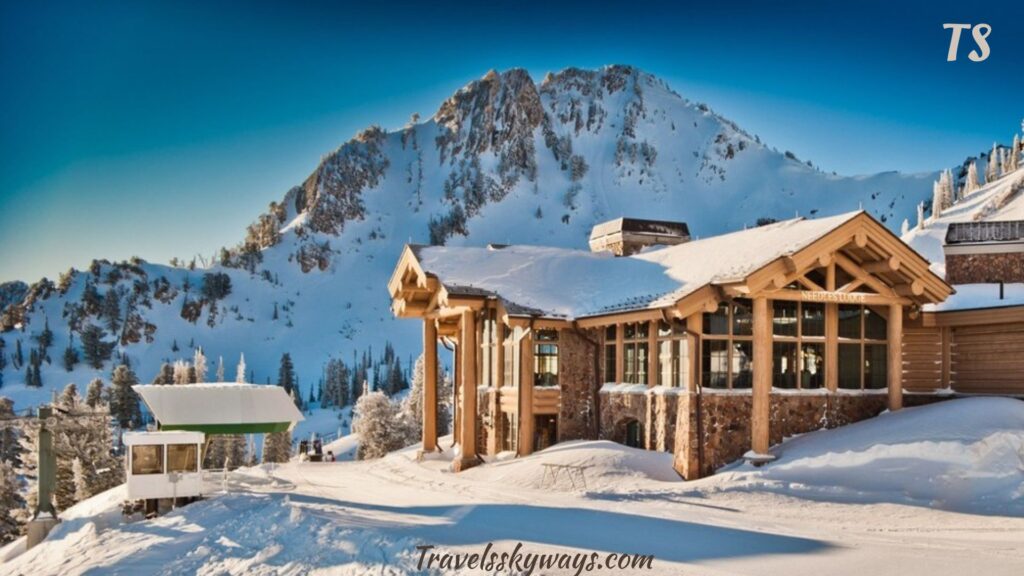
Hidden in Utah’s Wasatch Mountains, Snowbasin Resort is a world-class ski destination that combines Olympic legacy with laid-back luxury. With over 3,000 acres of skiable terrain, it offers powder-packed slopes, pristine groomers, and challenging bowls that cater to all skill levels.
You won’t find long lift lines here—just wide-open runs, scenic gondola rides, and panoramic views that stretch over Ogden Valley. Beyond skiing, visitors can enjoy elevated dining at mountaintop lodges and explore nearby trails for snowshoeing and Nordic skiing.
Whether you’re carving first tracks at sunrise or soaking in the alpine glow at sunset, Snowbasin Resort delivers an unforgettable mountain experience without the overcrowded feel of more commercial resorts.
Quick facts
- Why go: scenic gondola rides, fewer crowds, mountain biking, and backcountry access.
- Summer: late May to September for hiking and lifted access.
- Winter: mid‑November to April (snow permitting).
- Cost: Lift tickets tend to be cheaper than resort heavyweights (check their seasonal rates).
Must-try: Ride the Wildflower Gondola during summer for 360° views. Grab lunch at one of the mountaintop lodges and hike from there.
3. Albion Basin, Utah
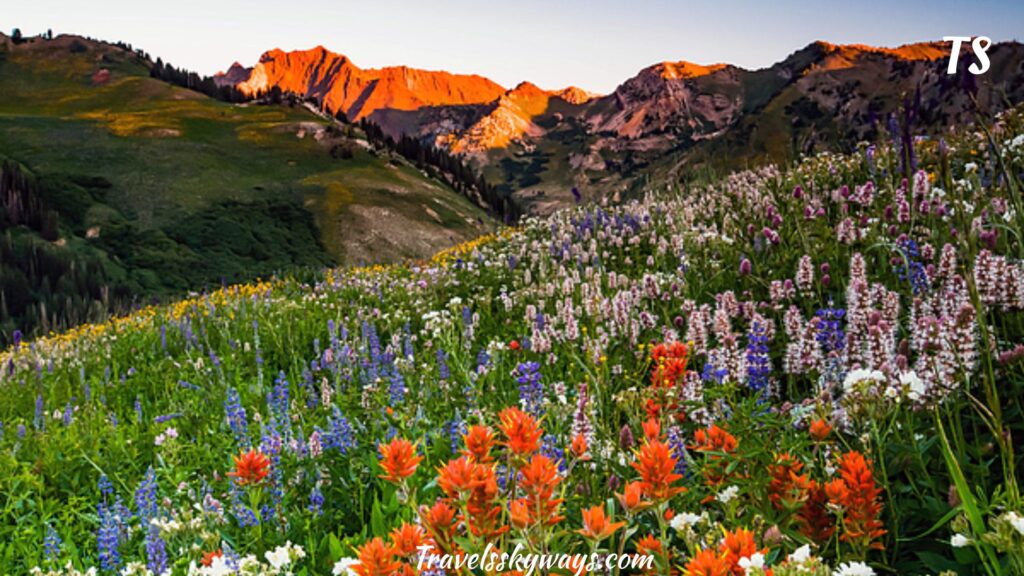
Perched at the top of Little Cottonwood Canyon, Albion Basin is one of those rare places that actually looks better in person than in photos—and that’s saying something. I first hiked there in late July, right when the wildflowers were at their peak, and it felt like walking through a living painting.
Lupine, paintbrush, and fireweed covered the rolling hills in waves of color, with craggy peaks rising in the distance. The trail to Cecret Lake is a must—it’s short, family-friendly, and ends at a crystal-clear alpine lake where you might spot a moose cooling off in the water.
What sets Albion Basin apart isn’t just its beauty, but its peacefulness. Even during peak season, it doesn’t feel overrun. Mornings are crisp, the air smells like pine, and the silence is broken only by birdsong and the rustle of aspens. If you’re after a true high-elevation escape that’s both breathtaking and easy to reach, Albion Basin delivers.
Details
- Peak bloom: Late June to early July (timing shifts annually with snowpack).
- Getting there: Drive Little Cottonwood Canyon (accessible May through September, depending on snow).
- Hiking: Several trails branch off the main basin road.
Cultural note: Alta and Albion Basin are part of the broader Utah ski resort loop but rarely get full credit for their summer beauty.
4. Antelope Island, Utah
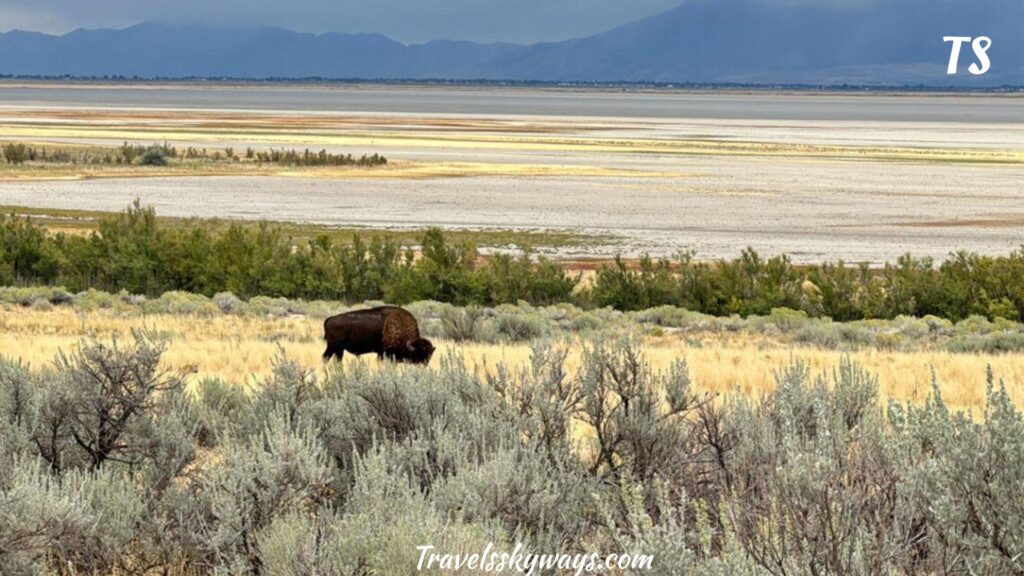
Rising out of the Great Salt Lake like a mirage, Antelope Island is one of Utah’s most surprising and unforgettable destinations. I’ve walked its windswept trails, watched herds of free-roaming bison thunder across the plains, and stood still as pronghorn antelope darted through golden grasslands.
Just an hour from Salt Lake City, the island feels a world apart—wild, rugged, and rich in silence. The hike to Frary Peak, the island’s highest point, offers jaw-dropping views of the lake’s salty expanse, with mountains mirrored in the still water on calm days.
At sunset, the landscape glows with a surreal beauty that’s impossible to capture in photos alone. Beyond hiking, there’s wildlife viewing, stargazing under pitch-black skies, and even a dip in the salty shallows near Bridger Bay Beach.
Antelope Island isn’t just a place to visit—it’s a place to slow down, breathe deep, and reconnect with the raw, untamed side of Utah.
Highlights
- Wildlife: Antelope, bison, mule deer, birds (especially during migration).
- Trails: Buffalo Point Trail, Frary Peak Trail (strenuous but rewarding).
- Water fun: Swim or float in the salty lake near the east shore (bring sunscreen).
Best time & cost
- Spring through fall offers mild weather.
- Entrance fee: ~$15–20 per vehicle (check updated state park rates).
Pro tip: Go early morning or late evening to see bison grazing in cooler light and avoid crowds.
5. Red Fleet State Park, Utah
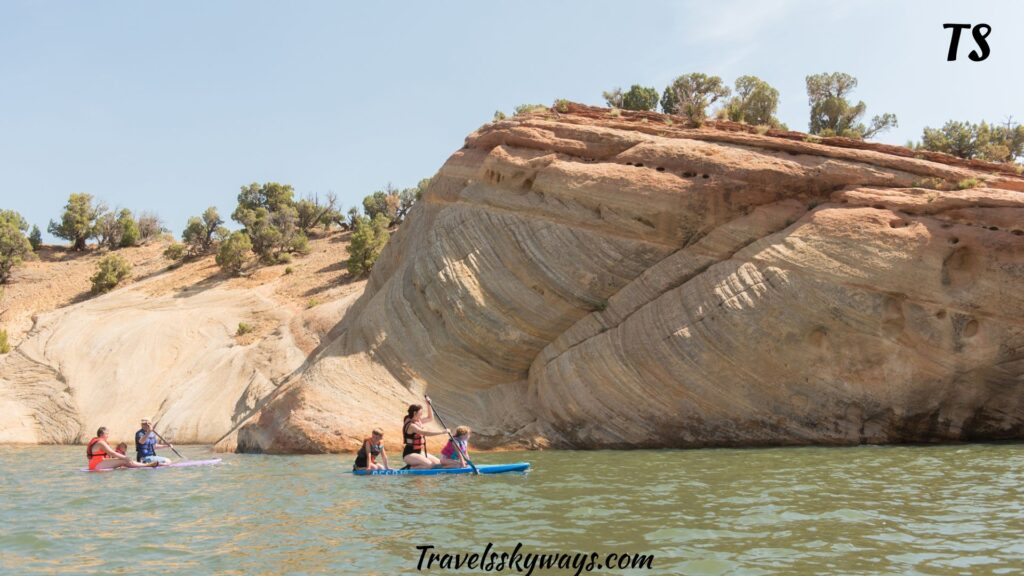
Red Fleet State Park, nestled in Utah’s northeast corner near Vernal, is one of the state’s most underrated treasures—and a spot I’ll never forget. The first time I paddled across the glassy reservoir, surrounded by towering red Navajo sandstone cliffs, it felt like I’d stumbled into a desert dreamscape.
The park’s nickname, “the little Lake Powell,” is well-earned, but Red Fleet offers something uniquely its own: a peaceful, uncrowded vibe and a family-friendly adventure base packed with surprises.
One of the highlights? Hiking the short but scenic Dinosaur Trackway Trail, where you can actually see 200-million-year-old dinosaur footprints embedded in the stone.
It’s surreal—standing where dinosaurs once walked, with red rocks and blue skies stretching for miles. The lake is perfect for kayaking, paddleboarding, and cliff jumping, and the campgrounds sit just close enough to the water to wake up with a view.
Red Fleet State Park may not be as famous as Zion or Moab, but if you’re after ancient history, outdoor fun, and desert solitude, this is the spot you didn’t know you needed.
What to do
- Kayak or paddleboard on Red Fleet Reservoir.
- Hike among fossil features and rock fins.
- Camp under dark skies—the stargazing is excellent here.
Quick facts
- Best time: March–May or September–October (avoid mid-summer heat).
- Access & cost: State park entrance fees apply; campsites are affordable.
- Local note: Keep an eye out for petroglyphs and interesting geology along the trails.
6. Dinosaur National Monument, Utah
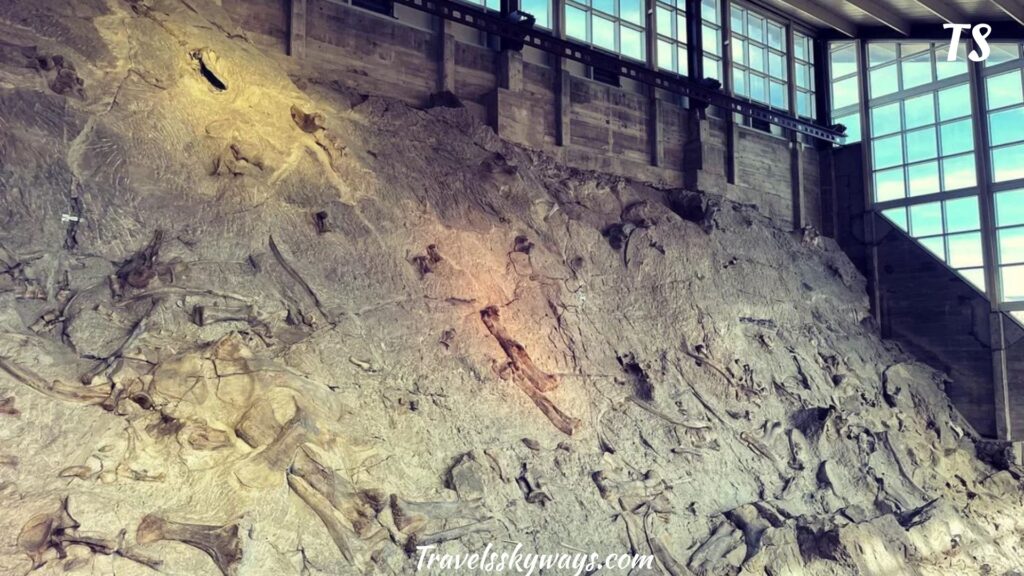
Dinosaur National Monument is a jaw-dropping blend of ancient history and rugged wilderness that every adventure seeker should experience firsthand.
I remember standing inside the massive Quarry Exhibit Hall, staring in awe at the wall of perfectly preserved Jurassic dinosaur fossils—some dating back over 150 million years. It’s like stepping into a time machine, where bones tell stories older than most civilizations combined.
But the monument isn’t just about fossils. The surrounding landscape—crisscrossed by the Green and Yampa Rivers—offers incredible hiking, river rafting, and stunning views of red rock canyons that look straight out of a movie.
The Harper’s Corner Overlook trail is a must; it delivers panoramic vistas that sweep across miles of rugged terrain, making you feel both tiny and connected to something vast and timeless.
For wildlife lovers, spotting bighorn sheep scaling the cliffs is a highlight, while history buffs can explore ancient petroglyphs and pictographs left by Native American cultures.
Whether you’re drawn by the prehistoric past or the raw beauty of the desert, Dinosaur National Monument promises an unforgettable adventure that stirs the imagination and satisfies the soul.
What to expect
- See dinosaur bones embedded in rock walls at the Quarry Exhibit Hall.
- Float through canyon stretches of the Green and Yampa Rivers (permit required).
- Hike remote hillsides, spotting ancient petroglyphs.
Quick facts
- The best times are late spring (May–June) and early fall (September).
- Cost & permits: Entrance and permit fees vary; river floats require booking.
- Insider note: When I rafted a one-day section, the silence of the canyon walls felt almost sacred.
7. Stansbury Island, Utah
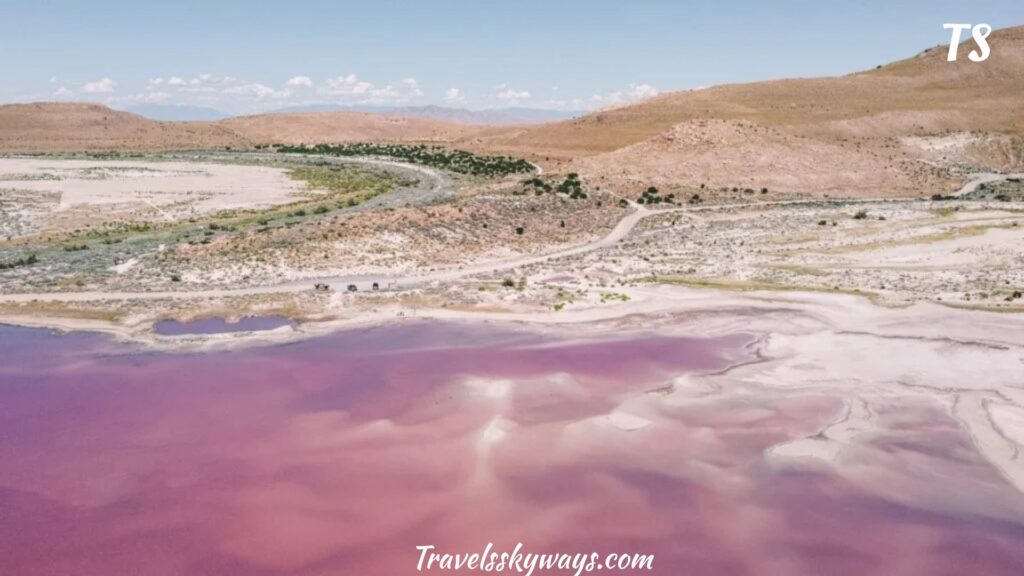
Stansbury Island, rising quietly from the vast expanse of the Great Salt Lake, is a hidden gem that’s easy to overlook but unforgettable once you explore it. I first discovered it on a clear spring morning, and the island’s rugged, rocky terrain instantly hooked me.
Unlike the bustling mainland, Stansbury feels like a private playground for hikers and nature lovers craving solitude. The Stansbury Island Loop Trail winds through ancient volcanic formations and offers sweeping views of the shimmering lake and surrounding desert.
What makes the island truly special? It’s a sense of isolation and untouched beauty. You might spot desert bighorn sheep navigating cliffs or catch a glimpse of rare birds nesting in hidden coves.
Plus, the quiet here is almost spiritual—perfect for anyone wanting to escape the noise and reconnect with nature. If you’re craving an off-the-beaten-path adventure with dramatic landscapes and plenty of peace, Stansbury Island delivers in spades.
Why visit
- Explore dry washes, slot canyons, and abandoned mine shafts.
- Birdwatch around marshes or Great Salt Lake wetlands.
- Use 4‑wheel drive (in dry conditions) or hike in.
Quick facts
- When: Spring, fall, or winter (avoid summer’s extreme heat).
- Note: No services—pack food, water, and know your route.
8. Bonneville Salt Flats, Utah
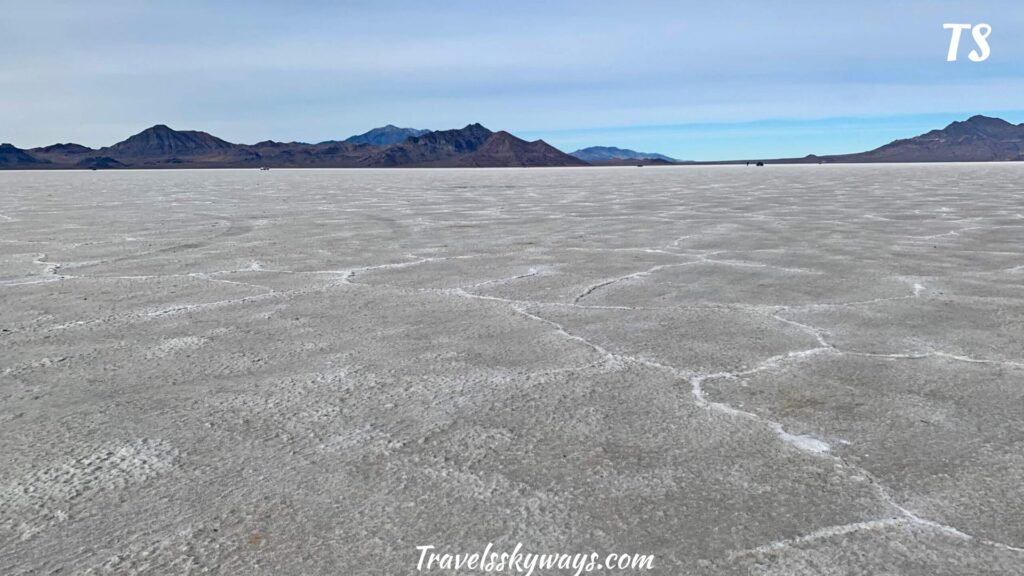
The Bonneville Salt Flats feel like stepping onto another planet right here in Utah. When I first set foot on this vast, mirror-like expanse, stretching endlessly under the open sky, I was struck by its surreal, almost otherworldly beauty.
The blinding white salt crust sparkles in the sun, creating a natural runway that has hosted some of the fastest land speed records on Earth.
Beyond the thrill of speed, the flats offer a photographer’s paradise—reflections so perfect they blur the line between ground and sky. Walking across the salt, you sense the incredible history beneath your feet, from prehistoric Lake Bonneville to modern-day speed trials.
Don’t miss the chance to visit during sunrise or sunset, when the flats glow with pastel hues, casting long shadows and painting the landscape with breathtaking colors.
Whether you’re chasing adrenaline or simply craving a one-of-a-kind natural spectacle, the Bonneville Salt Flats deliver an experience that’s as vast and unforgettable as the horizon itself.
What makes it special
- Photography paradise—sunset and sunrise mirror light across the flats.
- Occasional speed trials (where land speed records have been set).
- A must-stop on the Utah road trip route heading west.
Timing & cautions
- Visit when dry—after storms, the salts can be soft and muddy.
- Best light in early morning or golden hours.
- Safety: Avoid going far from vehicles without a guide.
- Cost: Free to access, though nearby facilities may charge for parking.
9. The Sun Tunnels, Utah
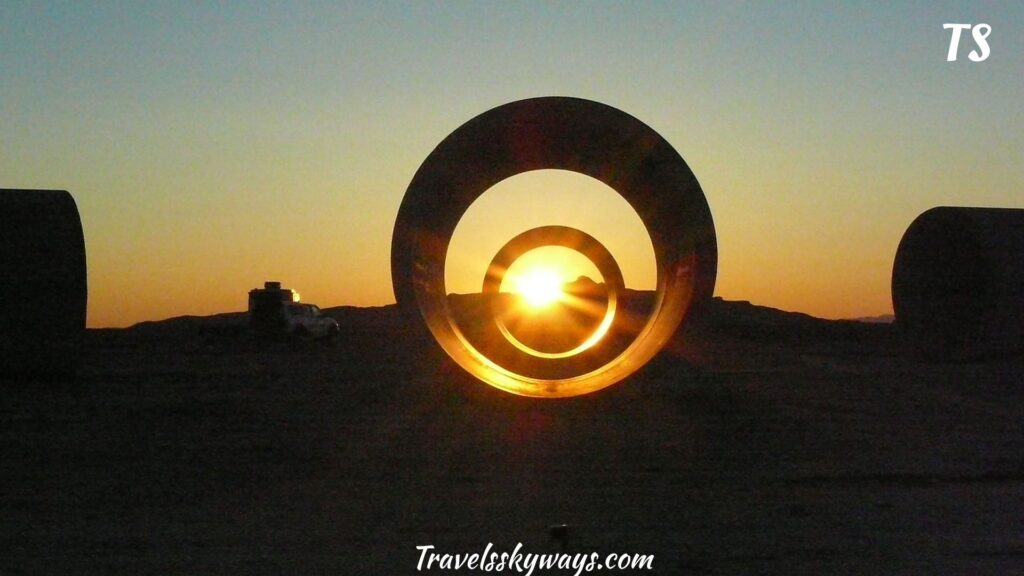
The Sun Tunnels in Utah’s remote desert feel like a secret portal carved by the earth itself. I first visited at dawn, and the moment the sun’s rays pierced through the giant concrete cylinders, I was mesmerized.
These massive tunnels, arranged in an X shape, aren’t just art—they perfectly align with the sunrise and sunset during the summer and winter solstices, turning light and shadow into a cosmic dance.
Walking through the tunnels, you feel connected to something ancient and vast, with the barren landscape stretching endlessly around you.
The tunnels frame distant mountains and the starry night sky, making this spot a favorite for photographers and stargazers alike. It’s quiet here—just you, the desert, and the slow passage of time.
If you want to experience a blend of art, nature, and astronomy all in one, the Sun Tunnels offer a truly unique escape that sparks curiosity and wonder like nowhere else.
Why visit
- It’s one of the most striking art installations in Utah.
- Great for photography, astronomy, and immersive desert silence.
- A remote location offers stargazing with minimal light pollution.
Access & logistics
- Gravel roads: high-clearance vehicle recommended.
- Seasonal access: drier months are safer.
- Plan your arrival on equinox/solstice dates if you want alignment.
Traveler insight: I timed a visit with the autumn equinox. As the sun slid through the tunnels, concentric shadows fell inward. The effect felt cosmic.
10. Dugway Geode Beds, Utah
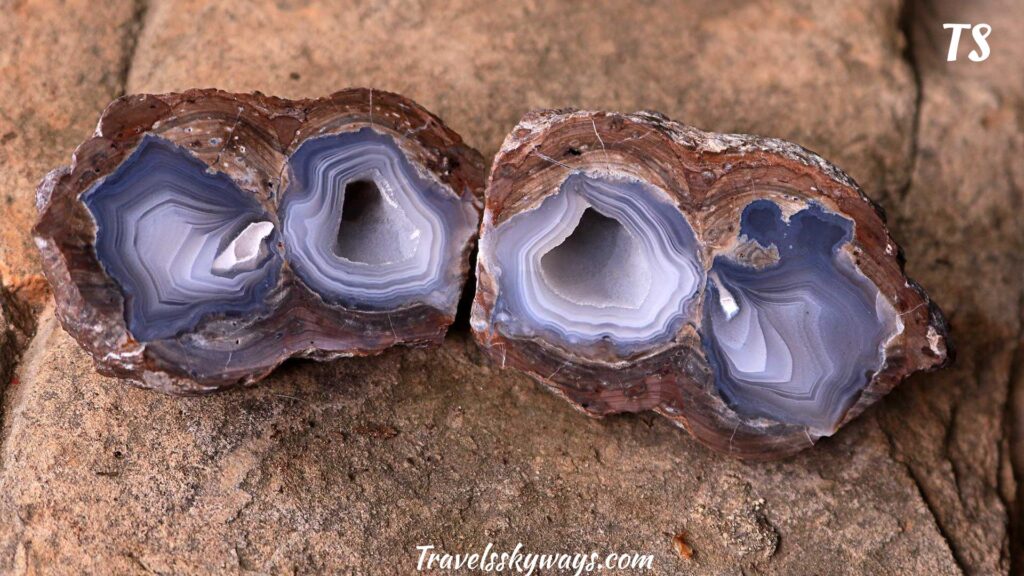
Tucked away in Utah’s rugged west desert, the Dugway Geode Beds offer a hands-on treasure hunt that’s pure fun for all ages.
When I first visited, I rolled up my sleeves and dug right into the dry soil, eager to uncover the sparkling geodes hidden just beneath the surface. These round, nondescript rocks burst open to reveal stunning crystals inside—nature’s own little surprises waiting to be discovered.
The site feels like a playground for rockhounds and curious explorers alike. You don’t need special tools—just patience, a hammer, and a bit of luck.
Beyond the thrill of the hunt, the surrounding landscape impresses with its vast, open skies and distant mountain views, making it a perfect day trip from Salt Lake City or Wendover.
If you’re after an adventure where you can literally uncover beauty from the earth, Dugway Geode Beds promises a unique and memorable experience that combines outdoor fun with a little geological magic.
What to know
- Bring digging tools, buckets, and knowledge of local regulations.
- Some roads can be rough or sandy—4WD helps.
- Pack for desert conditions: sun, wind, and heat.
Quick facts
- Best time: Spring and fall offer cooler weather.
- Tip: Be careful not to trespass—this land is semi‑remote and some roads cross restricted areas.
11. The Spiral Jetty, Utah
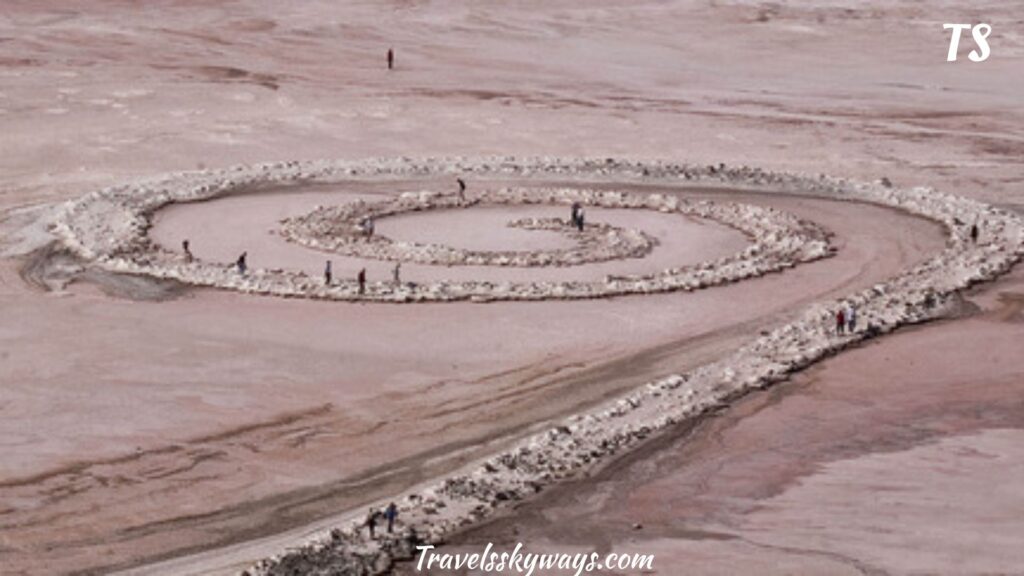
The Spiral Jetty feels like a secret handshake between art and nature, tucked away on the northeastern shore of Utah’s Great Salt Lake. When I first stood there, gazing at the massive coil of black basalt rocks twisting boldly into the shimmering pink water, I felt a mix of awe and calm wash over me.
Created by artist Robert Smithson in 1970, this iconic earthwork stretches over 1,500 feet, forming a giant spiral that seems to float and shift with the lake’s ever-changing water levels.
Visiting during low water reveals the full shape, while high water partially submerges it, turning the jetty into a mysterious ribbon of stone barely breaking the surface.
The salty air, the endless horizon, and the vibrant contrast between the dark rocks and the lake’s surreal colors make this spot feel like nowhere else on Earth.
Whether you’re into art, geology, or just seeking a peaceful, off-the-grid adventure, The Spiral Jetty offers a mesmerizing escape that sparks imagination and soothes the soul.
Why go
- It’s an offbeat complement to more typical Utah attractions.
- Ideal for reflective photography and conceptual art lovers.
- You can hike out along the spiral when the lake levels are low.
Access & conditions
- The road is unpaved; high-clearance vehicles are recommended.
- It may be submerged after high lake levels or storms.
- Safety: Check lake levels and weather before going.
Cultural note: The Spiral Jetty is frequently called one of America’s greatest land art pieces—it invites visitors to contemplate nature, time, and change.
12. Uintah Mountains, Utah
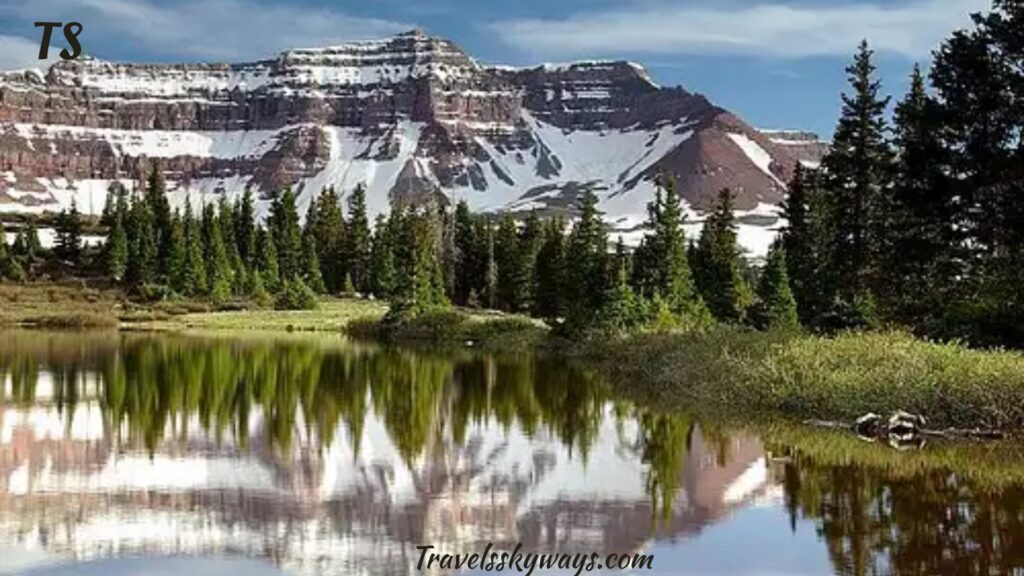
The Uintah Mountains stretch across northeastern Utah like a rugged spine of wilderness, and visiting them feels like stepping into a vast, untouched kingdom.
I remember my first trek through these high peaks—dense forests gave way to alpine meadows bursting with wildflowers, while crystal-clear streams sang alongside the trail. Unlike Utah’s more crowded mountain spots, the Uintahs offer a genuine sense of solitude and adventure.
With over 200 miles of hiking trails, including the challenging Highline Trail, you can explore deep canyons, shimmering lakes, and panoramic overlooks that reveal endless horizons. Wildlife is abundant here—elk, moose, and even the elusive mountain lion roam these remote ranges.
In the fall, the golden aspens light up the valleys, turning the landscape into a fiery masterpiece. Whether you’re camping, fishing, or simply soaking in the crisp mountain air, the Uintah Mountains provide a perfect backdrop for outdoor lovers craving authenticity and grandeur away from the crowds.
Top draws
- Mirror Lake Highway: scenic drive over Alpine passes with lakes, meadows, and peaks.
- Hiking & camping: trails like Kings Peak (Utah’s highest) or the Highline Trail.
- Fall colors: aspen groves transform the landscape in September.
Quick facts
- Best time: Mid-July through early October (snow lingers into summer).
- Cautions: Elevation, sudden storms, and variable trail conditions.
- Local story: On a mid-September trip, I watched deer graze in golden meadows while moose tracks led to hidden springs.
13. Kennecott Copper Mine, Utah
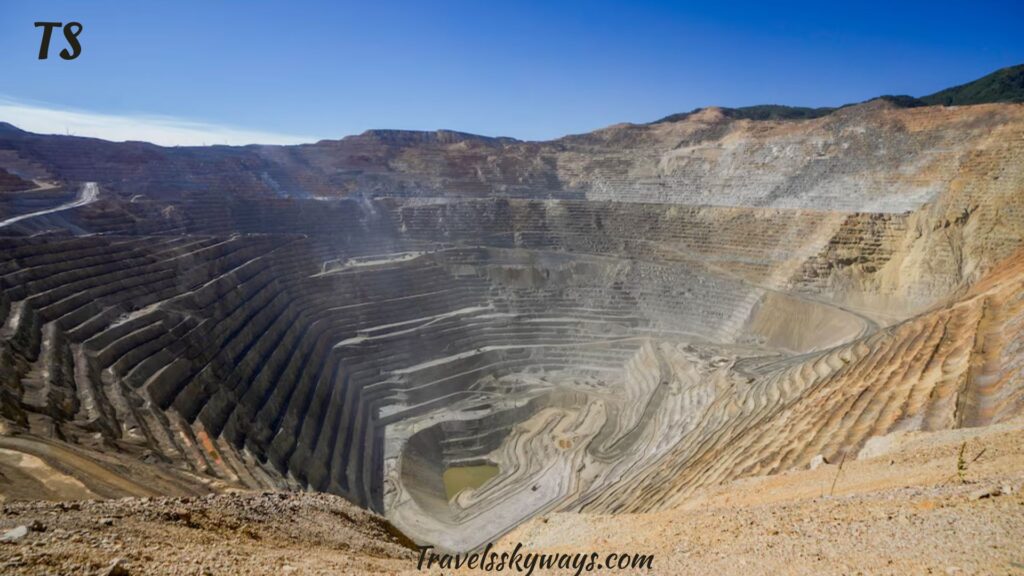
The Kennecott Copper Mine stands as a colossal testament to Utah’s industrial history, and visiting it feels like stepping inside a giant, open-air museum. I toured the site and was struck by the sheer scale—massive earth-moving machines, towering tailings piles, and vast open pits stretching as far as the eye can see.
This mine has been one of the world’s largest copper producers for over a century, and its impact on the local economy and landscape is undeniable.
What fascinated me most was how modern mining technology blends with the rugged mountain setting, revealing a complex dance between nature and industry.
The visitor center offers interactive exhibits that bring the mine’s story to life, from the geology of copper deposits to the lives of the workers who built this industrial giant.
Whether you’re interested in mining, geology, or just curious about how such a massive operation works, the Kennecott Copper Mine delivers an eye-opening experience that’s as educational as it is impressive.
What to see
- Massive terraced pit descending a mile deep.
- Observation viewpoints along Highland Drive.
- In summer/fall, occasional mine heritage tours (check schedule).
Quick facts
- Best time: Year-round visibility, though winter snows may obscure access roads.
- Note: Don’t venture down off designated viewpoints—it’s active and dangerous.
14. Thanksgiving Point, Utah
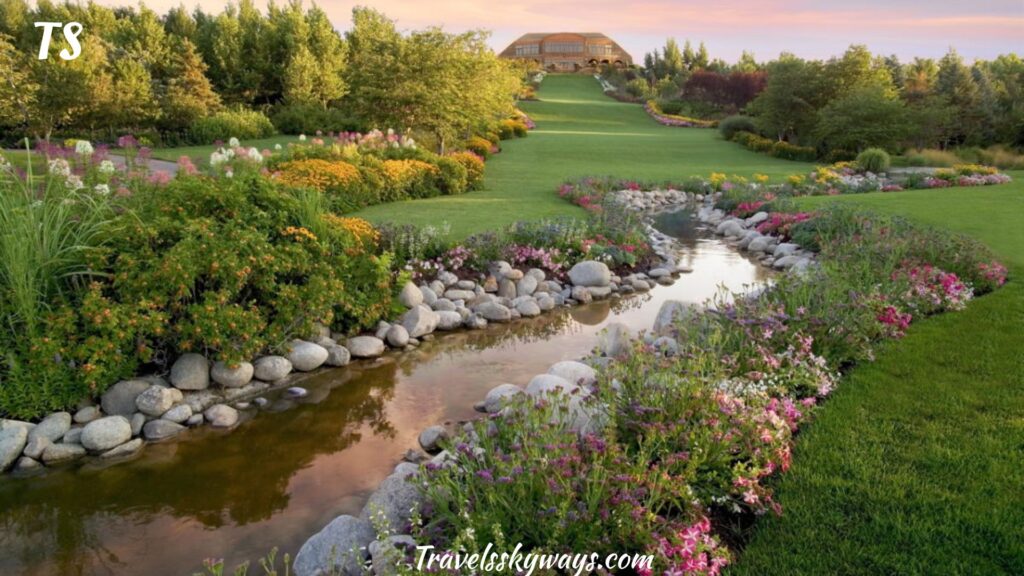
Thanksgiving Point in Utah is a vibrant playground where families and curious minds come alive. I spent a whole day exploring its sprawling grounds, and every corner offered something new—whether wandering through the lush Gardens, digging up fossils at the Museum of Natural Curiosity, or marveling at the stunning dinosaur exhibits at the Museum of Ancient Life.
What sets Thanksgiving Point apart is how it blends education with fun. Kids and adults alike get hands-on experiences, like planting in the Ashton Gardens or experimenting with science in interactive exhibits.
The venue also hosts seasonal events—from dazzling holiday light shows to lively festivals—that bring the community together year-round.
If you want a spot that’s equal parts learning, adventure, and relaxation, Thanksgiving Point nails it. It’s more than just a destination; it’s a place where curiosity blooms and memories are made.
Attractions
- Ashton Gardens: botanical displays and seasonal blooms.
- Museum of Ancient Life: huge dinosaur skeleton exhibits.
- Farm Country: interactive animal and farming experiences.
Cost & logistics
- Admission varies per attraction or combo packages.
- Open year-round with seasonal events (e.g., fall festivals).
- Parking is available; it’s more commercial than remote sites.
15. Timpanogos Cave National Monument, Utah
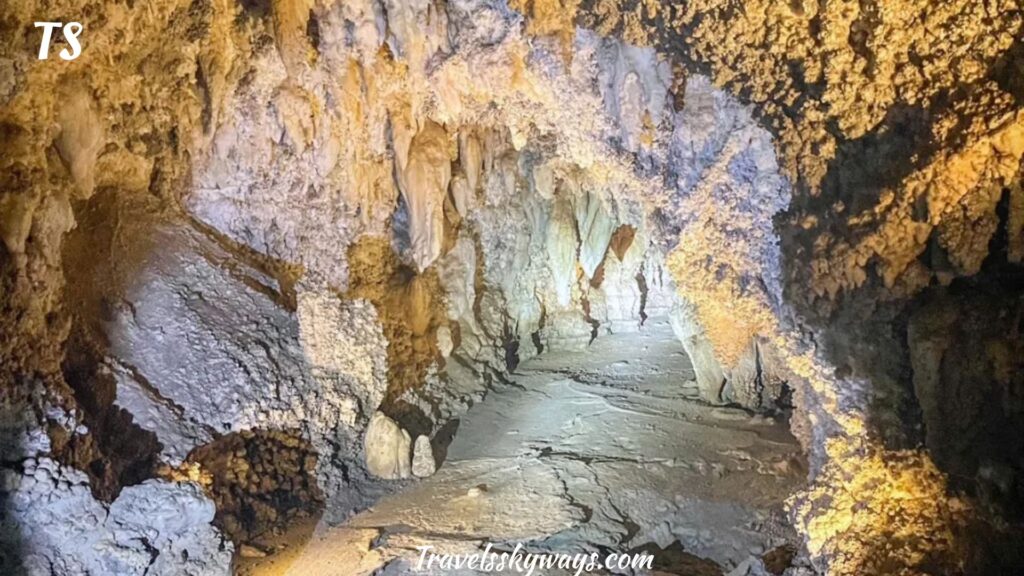
Timpanogos Cave National Monument is a hidden underground wonder that left me absolutely amazed. Hiking the steep, scenic trail up to the cave’s entrance gets your heart pumping, but the real reward awaits inside.
As I stepped into the cool, dimly lit chambers, the walls sparkled with stunning stalactites, stalagmites, and flowstones—nature’s slow, artistic masterpiece carved over thousands of years. The guided tour brings the cave to life, sharing stories of its geology and the delicate ecosystem that thrives in the darkness.
The echoes of dripping water and the narrow passageways add a sense of adventure, making you feel like an explorer uncovering a secret world. Plus, the views from the trail itself—looking out over the Mount Timpanogos Wilderness—are just as breathtaking.
If you’re up for a mix of outdoor exercise, natural beauty, and a dash of mystery, Timpanogos Cave National Monument delivers an unforgettable experience that’s well worth the hike.
What to expect
- Tours run in the summer months (check schedule).
- Trail to the caves climbs ~1,000 feet—strenuous but scenic.
- Informative cave guides describe speleothems, geology, and the natural history of the caves.
Quick facts
- Best season: Late spring through early fall (closed during heavy snow).
- Cost: Entrance plus guided-tour fees.
- Pro tip: Reserve cave tours in advance—they fill up fast during peak travel season.
16. Provo Canyon, Utah
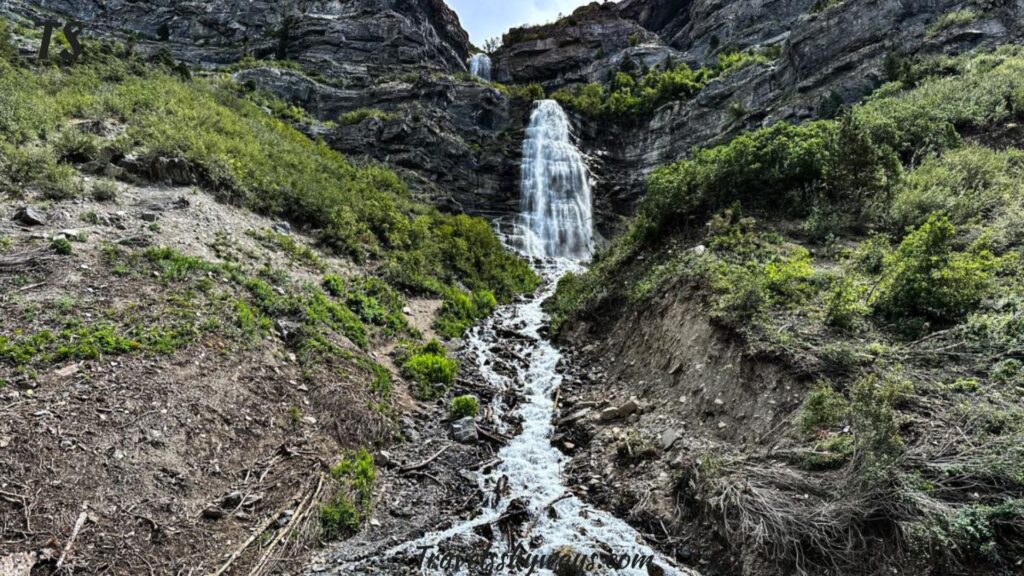
Provo Canyon is a breathtaking gateway to Utah’s outdoor wonders, and visiting it feels like entering a postcard come to life. Driving through the canyon, I was greeted by towering cliffs, roaring waterfalls, and the crystal-clear waters of the Provo River weaving through the valley.
The air was fresh and filled with the scent of pine and wildflowers, instantly refreshing my spirit. Whether you’re into hiking, fishing, or simply soaking in nature’s beauty, Provo Canyon has something for you.
Trails like Stewart Falls offer easy access to stunning cascades, while more challenging routes lead deep into the Uinta-Wasatch-Cache National Forest. In winter, the canyon transforms into a snowy playground for skiing and snowshoeing.
For a quick escape from city life or a day full of adventure, Provo Canyon delivers with its mix of scenic drives, outdoor activities, and peaceful spots to unwind. It’s a must-see for anyone wanting to experience the heart of Utah’s natural charm.
Things to do
- Drive the canyon road, stopping at Bridal Veil Falls.
- Hike smaller side trails (e.g., Battle Creek Falls).
- In fall, watch for turning foliage; in summer, dip toes in cool streams.
Quick facts
- Transport tip: The canyon road is mostly paved and accessible year-round (barring winter closures).
- Local flavor: On a mid‑October drive, golden leaves drifted into the Provo River and elk echoed down the ridges.
17. Sundance Resort, Utah
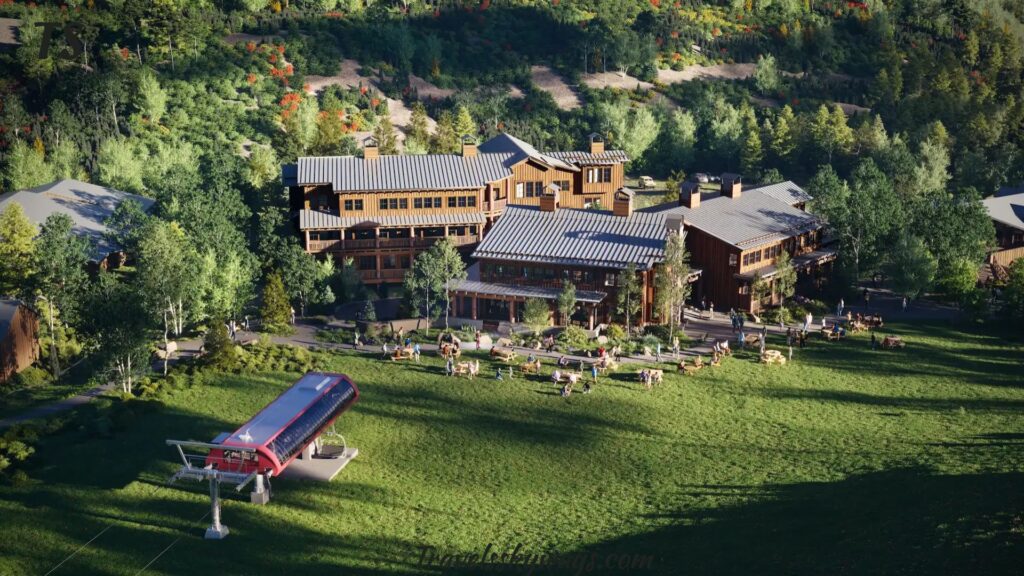
Sundance Resort isn’t just a ski destination—it’s a mountain retreat where art, nature, and adventure come together in perfect harmony. I’ve spent crisp winter mornings carving fresh powder on its legendary slopes, then unwinding beside a roaring fireplace at the cozy lodges.
Nestled in the Wasatch Mountains, Sundance offers fewer crowds and a more intimate vibe compared to busier resorts. Beyond skiing, the resort pulses with creativity—home to Robert Redford’s famous Sundance Film Festival and a vibrant arts scene year-round.
Hiking trails wind through towering pines and wildflower meadows, while the spa and farm-to-table dining provide the perfect way to recharge after a day outdoors.
Whether you’re chasing adrenaline or craving a peaceful mountain escape with a cultural twist, Sundance Resort delivers an experience that feels both luxurious and genuine—one that keeps visitors coming back season after season.
What draws people
- Yoga, film, and arts programming year-round.
- Chairlift rides for panoramic views and hiking access.
- Fine dining and lodging in a quiet, wooded setting.
Quick facts
- Best time: Summer for arts festivals and hiking; winter for snow recreation.
- Cost: Higher-end resort pricing, but lodging includes access to many amenities.
18. Homestead Crater, Utah
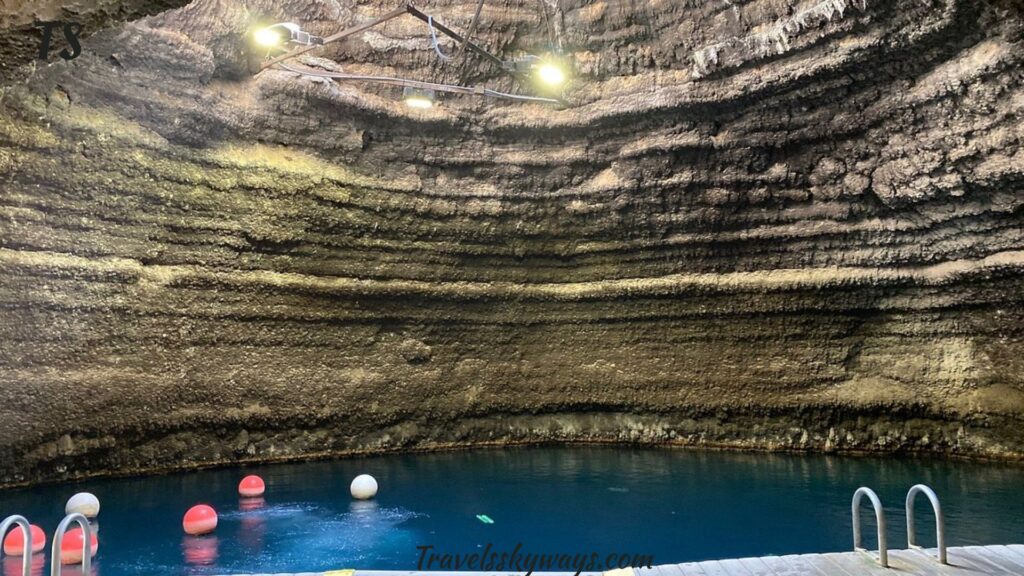
Homestead Crater is a geothermal marvel tucked away in Utah’s scenic Wasatch Back, and stepping inside feels like entering a warm, natural hot tub hidden beneath a limestone dome.
When I first waded into its mineral-rich waters, I was instantly relaxed—the constant 90-degree temperature makes it perfect year-round, no matter the weather outside.
This crater isn’t just for soaking; it’s a unique spot for snorkeling and even scuba diving inside the bubbling spring. Surrounded by towering walls of stone, the sunlight filters through the water, creating an almost otherworldly glow.
Plus, the peaceful vibe and natural warmth make it a perfect escape from the usual hectic pace. If you want a one-of-a-kind experience that blends nature’s heat with a touch of adventure, Homestead Crater offers a soothing retreat unlike anywhere else in Utah.
Why it’s unique
- You swim inside a crater—no other place in Utah is quite like it.
- Warm (~96–102°F) mineral water year-round.
- Underwater diving experiences are available (with certification).
Logistics & cost
- Entry and swim or snorkel fees apply.
- Bring your swimwear and towel; rentals offered.
- Closed occasionally for maintenance—check ahead.
Traveler insight: I visited on a blustery October afternoon. After a cold hike, entering the crater felt like stepping into a warm, secret spa. The light filtering through the top created dancing ripples on the walls.
19. Fifth Water (Diamond Fork) Hot Springs, Utah
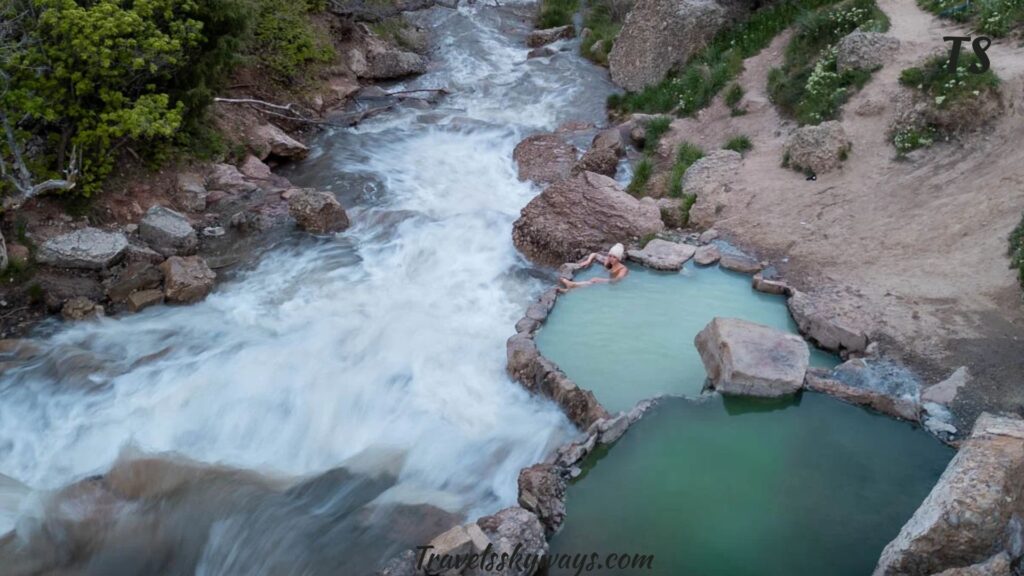
Fifth Water Hot Springs, nestled deep in Utah’s Diamond Fork Canyon, is a hidden oasis that feels like a secret reward after a scenic hike.
I remember trekking along the rocky trail, surrounded by towering cliffs and the soothing sound of rushing water, until I reached the warm, natural pools tucked beside a cascading waterfall.
The mineral-rich springs provide the perfect spot to relax tired muscles while soaking in stunning views of the surrounding forest.
What makes Fifth Water special is its blend of adventure and tranquility—you earn the soak after a moderate hike, and once there, the bubbling pools offer pure bliss under the open sky.
Bring your friends, a picnic, and a sense of wonder, because this spot feels like nature’s own hot tub hidden in the heart of the wilderness.
For anyone craving a mix of outdoor exploration and peaceful relaxation, Fifth Water Hot Springs is an unforgettable getaway that recharges both body and spirit.
Trail & atmosphere
- ~2.5‑ to 3‑mile round-trip hike (moderate) to several cascaded springs.
- Peaceful, forested surroundings create a natural spa vibe.
- Pack snacks, water, and a swimsuit (shorts/towels get wet on the way in).
Quick facts
- Best visit time: Spring through fall; avoid high snowmelt or stormy periods.
- Note: The springs are free, but no formal facilities—pack out your trash.
Things to do in Central Utah
20. Young Living Lavender Farm, Utah
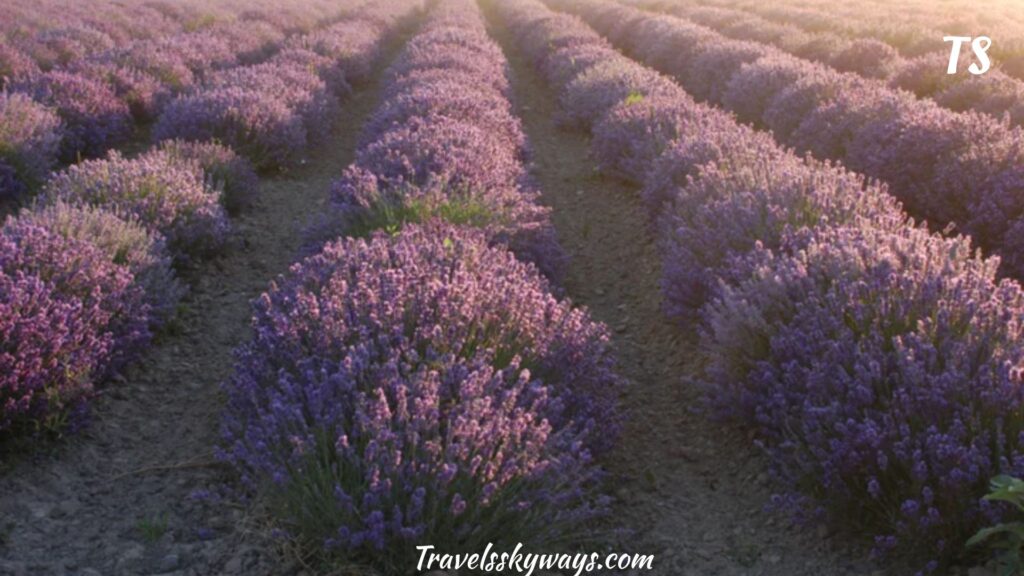
The Young Living Lavender Farm in Mona, Utah, is a fragrant, sun-soaked haven that feels like stepping into a dream. As I walked through rows of vibrant lavender fields swaying in the breeze, the calming scent enveloped me, creating a sense of peace that’s hard to put into words.
Nestled at the foot of the Wasatch Mountains, this farm is more than just a pretty place—it’s a working essential oil farm with deep roots in natural wellness.
During the summer, especially during the Lavender Days Festival, the farm comes alive with live music, wagon rides, food vendors, and even jousting tournaments. The on-site distillery offers a peek into how pure essential oils are made, and the gardens and farm animals make it a hit for families.
Whether you’re a fan of aromatherapy, love stunning landscapes, or want a relaxing day outdoors, the Young Living Lavender Farm is a sensory escape that soothes your soul and sparks your curiosity.
What to expect
- Guided farm tours explaining seed-to-seal distillation.
- Wagon rides, fields to walk through, and specialty product shopping.
- Seasonal events like Lavender Day, 5K runs, and distillery demonstrations.
- Best time: Late June through early July (peak lavender).
Insider tip: Bring closed-toe shoes to navigate farm terrain. Also, cash can be handy at rural farm stores.
21. Topaz War Relocation Center and Museum, Utah
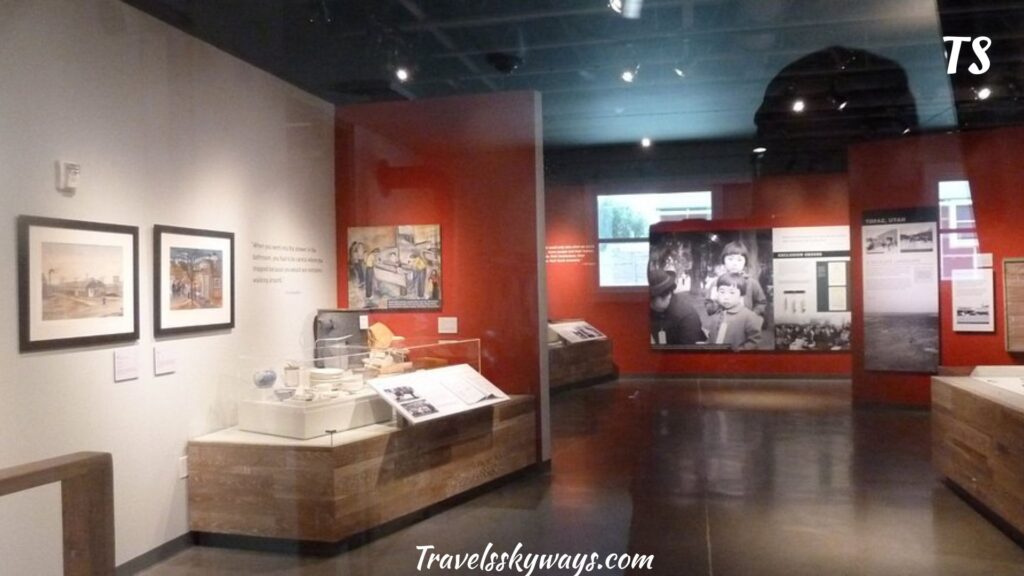
The Topaz War Relocation Center and Museum, located near Delta, Utah, is one of the most sobering and important historical sites in the American West.
Walking through the museum, I was struck by the deeply personal stories—photographs, letters, and artifacts—that bring to life the experiences of over 11,000 Japanese Americans who were forcibly relocated here during World War II.
Out on the dusty remains of the actual Topaz internment camp, silence fills the wide-open space, broken only by the wind. It’s hard not to feel the weight of history while standing where families lived behind barbed wire, enduring harsh conditions and the loss of their civil liberties.
The museum does an exceptional job educating visitors on this dark chapter in U.S. history with honesty and empathy, reminding us why remembering matters.
For anyone interested in civil rights, wartime history, or the resilience of the human spirit, the Topaz War Relocation Center and Museum is a powerful, must-visit destination that leaves a lasting impact.
Why it matters
- It was the site where over 9,000 Japanese Americans were interned during WWII.
- Today, a museum and interpretive exhibits commemorate the lives and stories of those interned.
- You’ll see foundations, walk roadways, and feel the solemn weight of history.
Visiting tips
- Combine with a stop in Delta, Utah (nearest town).
- Check museum hours and guided tour availability.
- Bring water and shade protection—summer can be hot in Central Utah.
Cultural note: I once spent an afternoon listening to recordings of former internees. The quiet desert air around me felt charged with memory.
22. Little Sahara Sand Dunes, Utah
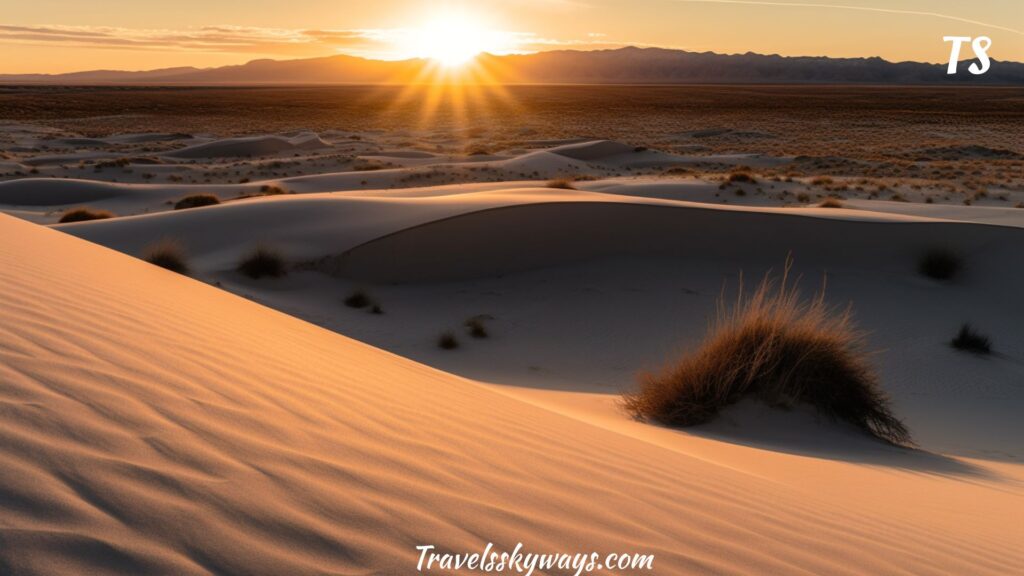
Little Sahara Sand Dunes, just a couple of hours southwest of Salt Lake City, is Utah’s ultimate desert playground—and an adrenaline junkie’s dream. The first time I rolled up in an ATV and saw those massive, wind-sculpted dunes rising like waves across the horizon, I felt like I’d landed in the Sahara itself.
Spanning over 60,000 acres, this ever-shifting landscape offers endless opportunities for off-roading, sandboarding, hiking, or just kicking back and watching the sunset light the dunes on fire.
The highlight? Sand Mountain, a towering 700-foot dune that challenges even the most experienced riders. But there’s also plenty of space for families and casual adventurers—kids can play in the sand, while stargazers can enjoy some of Utah’s clearest night skies.
Whether you’re revving up a dune buggy or just digging your toes into the warm, golden sand, Little Sahara is pure freedom. It’s raw, wild, and unforgettable—exactly what a desert escape should be.
What to do
- Rent or bring an ATV/UTV (many outfitters near Scipio or Fillmore).
- Try sandboarding or dune surfing.
- Camp among dunes—sunsets here turn gold and deep pink.
Quick facts
- Best time: Spring and fall (avoid mid-summer heat).
- Note: Check rules for drone use, night riding, and closures.
- Cost: Vehicle permits required; riding gear often included with rentals.
23. Pando (The Trembling Giant), Utah
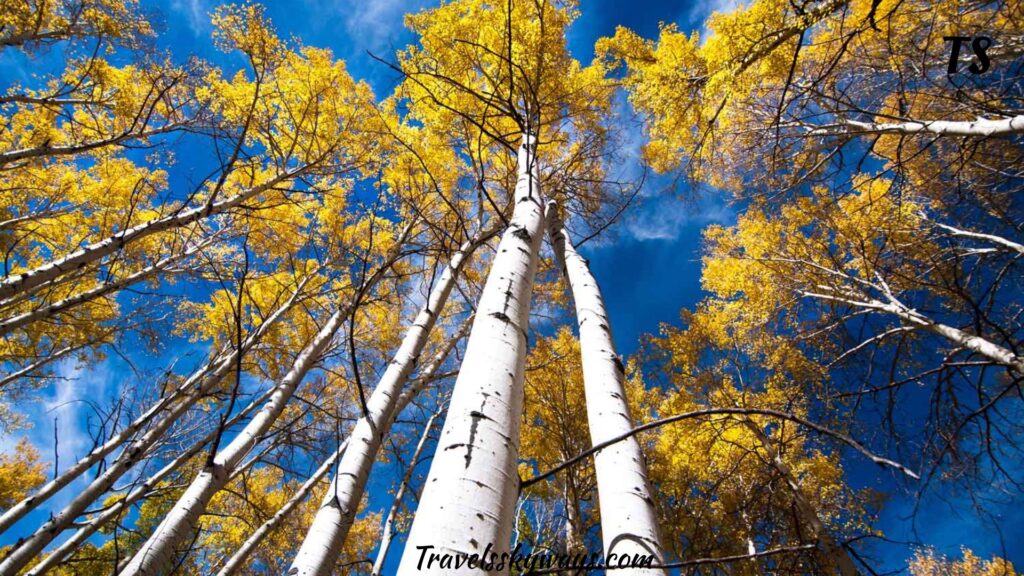
Pando, also known as The Trembling Giant, is one of Earth’s most mind-blowing natural wonders—and yet, most people have never heard of it.
Tucked away in Fishlake National Forest in central Utah, Pando looks like a beautiful grove of quaking aspens. But here’s the twist: it’s actually one single living organism, connected by an enormous underground root system.
Walking through it, I was surrounded by tens of thousands of trees, all shimmering in the wind with that classic aspen flutter—but genetically, every one of them is the same tree.
Scientists estimate Pando is around 80,000 years old, making it not only the largest living organism on Earth by mass, but also one of the oldest.
There’s a quiet magic in the air as you explore this ancient giant. In the fall, the leaves turn gold in perfect unison. In spring, new shoots rise together like a symphony of renewal.
For nature lovers, photographers, and anyone seeking awe in the natural world, Pando offers a humbling, unforgettable experience—living proof that some of the world’s greatest wonders grow in silence.
Why see it
- It demonstrates the power of vegetative reproduction—every tree connects underground.
- It’s a quiet, contemplative stop on many Utah road trip routes.
Best approach
- Visit in late summer or fall when the golden foliage is vivid.
- Use nearby trailheads for short walks through aspen groves.
- Be respectful—don’t scar roots or soil; it’s fragile.
Personal anecdote: I walked beneath a canopy of golden leaves, feeling dwarfed by the grove. When the wind rippled through, the entire stand trembled—the “trembling giant” lived up to its name.
24. Goblin Valley State Park, Utah
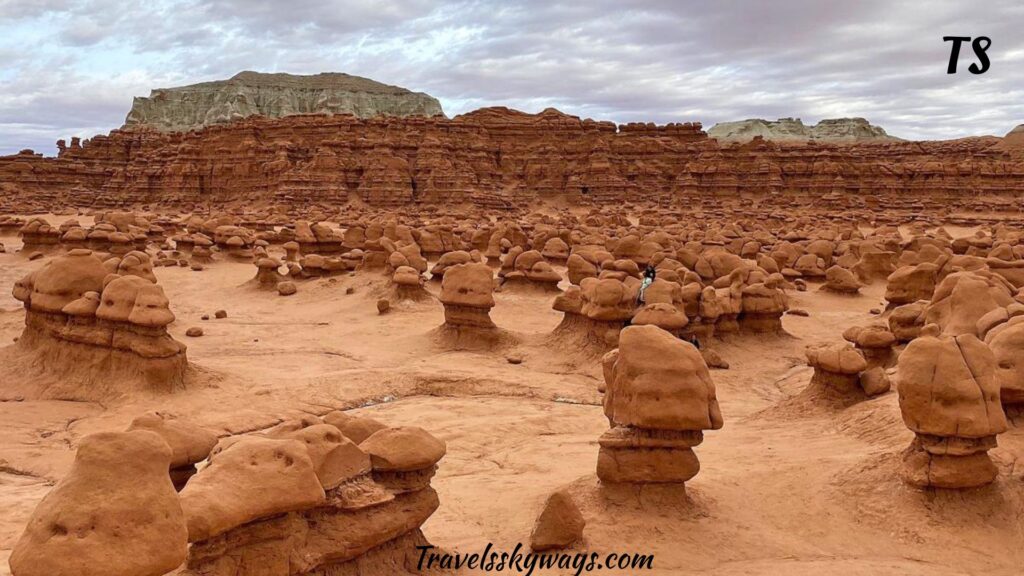
Goblin Valley State Park is like stepping onto another planet—no exaggeration. The moment I arrived, I was surrounded by thousands of bizarre, mushroom-shaped rock formations (affectionately called “goblins”) that stretched across the desert floor like a stone army frozen in time.
Erosion sculpted these soft sandstone figures into wild, whimsical shapes, and walking among them feels like exploring a giant, natural playground. Located in central Utah, not far from Capitol Reef, Goblin Valley is perfect for families, photographers, and curious wanderers.
There’s no need for marked trails here—you’re free to roam, climb, and discover at your own pace. The surreal landscape comes alive at sunset, when the goblins glow orange and cast long, eerie shadows across the valley.
If you’re into stargazing, this park is also a Dark Sky destination, offering crystal-clear views of the Milky Way. Whether you’re camping overnight or just visiting for the day, Goblin Valley State Park is one of Utah’s most unique and otherworldly experiences—a real-life sci-fi movie set you can actually touch.
What to do
- Hike the Goblin’s Lair or Valley of the Goblins trails.
- Camp inside or near the park (campgrounds have basic amenities).
- Bring rock-scrambling shoes—some formations are tricky but fun.
Quick facts
- Best time: Spring and fall for milder temperatures.
- Cost: State park fees required (generally affordable).
- Tip: Go early or late to avoid midday heat.
Things to do in Southern Utah
25. Cedar City’s Utah Shakespeare Festival, Utah
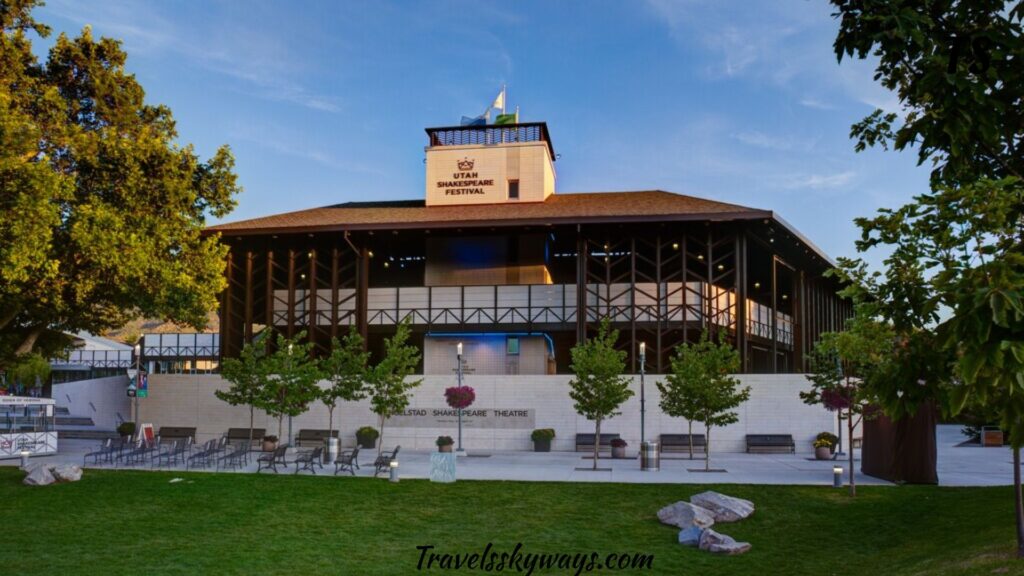
Cedar City’s Utah Shakespeare Festival is where small-town charm meets world-class theater—and as someone who’s experienced it firsthand, I can say it’s nothing short of magical.
Held on the campus of Southern Utah University, the festival transforms this quiet corner of Utah into a buzzing cultural hub every summer and fall.
The moment I walked into the Engelstad Shakespeare Theatre, styled after London’s Globe, I was swept into the energy: live music, candlelit ambiance, and actors delivering lines with passion and precision under the open sky.
But it’s not just about Shakespeare. The festival also stages modern plays, comedies, and musicals, all performed by professional actors from around the country. Backstage tours, literary seminars, and costume exhibits make it a fully immersive experience.
Whether you’re a lifelong fan of the Bard or just curious about live theater, the Utah Shakespeare Festival blends art, history, and performance in a way that feels both grand and intimate.
Set against the backdrop of southern Utah’s red rock beauty, this Tony Award-winning festival is a must-see for travelers looking to feed their minds and spirits.
What you’ll find
- High‑quality productions of Shakespeare and other works in indoor and outdoor theaters.
- Festival runs generally from June through October.
- Special events, educational programming, and community engagement.
Logistics & tickets
- Buy tickets well in advance.
- Stay in Cedar City or nearby; local restaurants and ambiance make it a nice base.
- Combine a festival visit with Red Canyon or Zion for a well-rounded trip.
26. Snow Canyon State Park, Utah
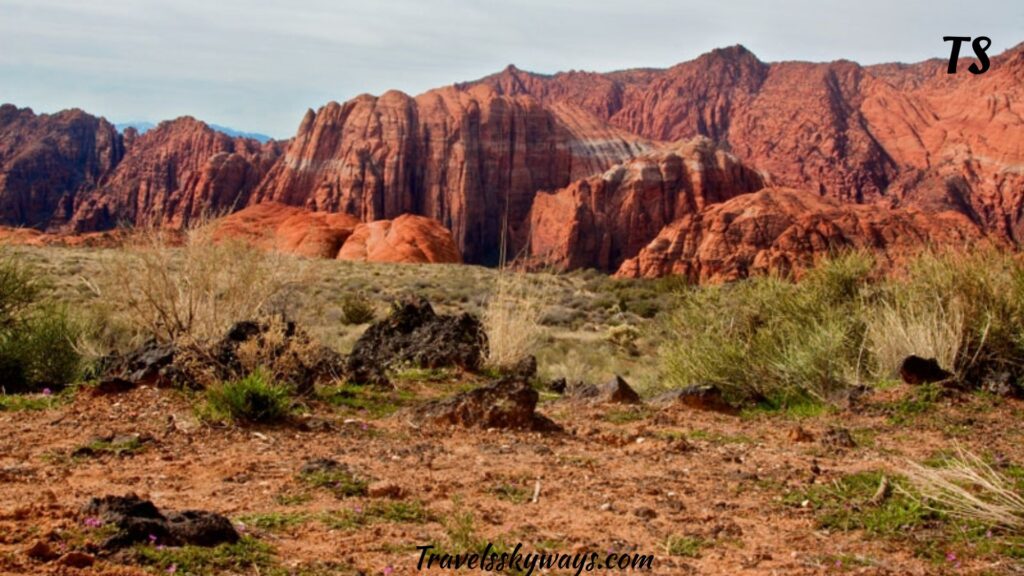
Snow Canyon State Park, nestled just outside of St. George in southwestern Utah, is one of the state’s most underrated gems—and once you step into it, you’ll wonder how it’s stayed such a secret.
I remember hiking through its fiery red and white sandstone cliffs, with black lava flows weaving through the desert like frozen rivers. The contrast of colors is striking, especially under that endless blue sky.
The park’s trails range from easy walks like Petrified Dunes and Jenny’s Canyon to more challenging routes like Johnson Canyon—each offering incredible views, hidden slot canyons, and chances to spot desert wildlife. And don’t miss climbing the slickrock—it’s like nature’s jungle gym for all ages.
Whether you’re hiking, biking, rock climbing, or just soaking up the sun, Snow Canyon offers the beauty of Zion without the crowds. With its cinematic landscapes and peaceful trails, it’s the perfect place to connect with the desert’s raw, rugged soul.
Activities
- Hike popular routes like Jenny’s Canyon, West Canyon Trail, or Petrified Dunes.
- Spot wildlife: desert bighorn sheep, foxes, and lizards.
- In the evening, join stargazing sessions under darker skies.
Quick facts
- Best time: Fall through spring (summer temperatures soar).
- Entrance fee: Modest state park entry cost.
- Tip: The Utah desert attractions here are dramatic and accessible for families.
27. Tuacahn Amphitheater, Utah
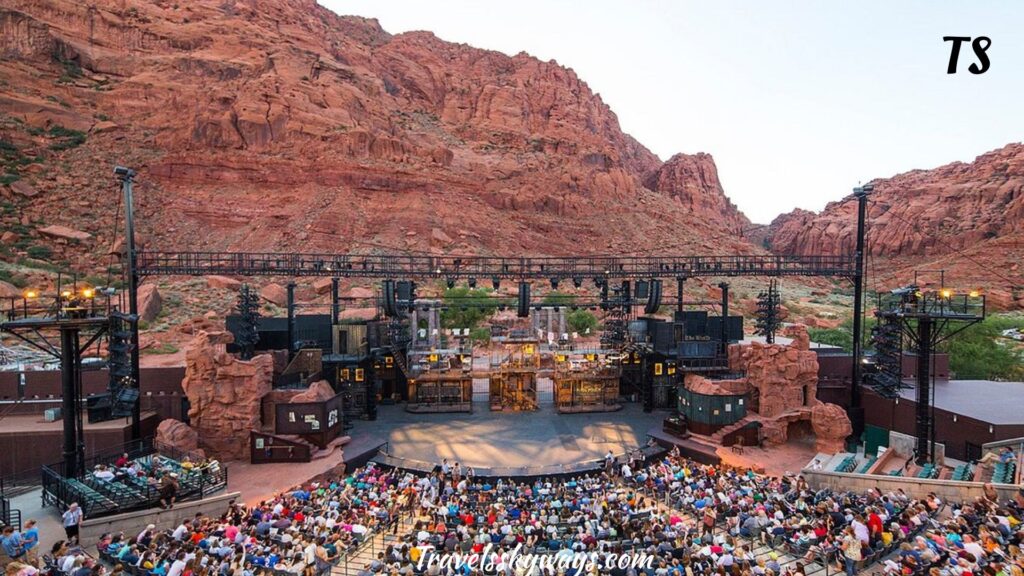
Tuacahn Amphitheater, set dramatically in the red rock canyons of Ivins, Utah, is hands-down one of the most breathtaking places to experience live theater in the country.
The first time I saw a show there, I wasn’t sure what dazzled me more—the Broadway-level production or the natural sandstone cliffs glowing behind the stage as the sun set.
This outdoor amphitheater seats nearly 2,000 guests, yet it feels intimate, with the towering red rock walls forming a natural backdrop that becomes part of the performance.
Whether it’s a splash-filled production of The Little Mermaid or a stirring rendition of Les Misérables, Tuacahn’s use of pyrotechnics, live animals, and creative staging turns every show into a full sensory experience.
Before the curtain rises, you can stroll through the peaceful grounds, browse local artisan booths, or grab dinner from food vendors. For theater lovers, families, and anyone looking to blend culture with southern Utah’s dramatic beauty, Tuacahn Amphitheater is an unforgettable night under the stars.
Why visit
- Broadway-style musicals under the stars.
- A blend of natural drama and performance art.
- Seasonal runs (spring through fall) with rotating shows.
Tickets & timing
- Check the performance schedule; evening shows are magical.
- Arrive early to picnic and enjoy the desert surroundings.
- Great option for couples or arts lovers wanting more than hiking.
Sample 7- or 10-Day Utah Hidden-Gem Itinerary
Here’s how you can combine these hidden gems into a 7–10 day Utah road trip:
| Day | Region | Suggest Sites |
| 1 | Northern | Mantua Poppy Fields → Antelope Island |
| 2 | Northern | Snowbasin Resort → Albion Basin |
| 3 | Northern/Eastern | Dinosaur National Monument → Uintah Mountains |
| 4 | Western | Bonneville Salt Flats → Spiral Jetty → Sun Tunnels |
| 5 | Central | Young Living Lavender Farm → Topaz Relocation Museum |
| 6 | Central | Little Sahara Dunes → Pando |
| 7 | Southern | Snow Canyon State Park → Tuacahn Amphitheater |
| 8–10 | Flexible | Kennecott Mine, Goblin Valley, Cedar City Festival |
FAQs
What are some lesser-known safety tips for exploring remote areas in Utah?
In remote Utah locations, cell service is often unreliable. Always carry a physical map, tell someone your route, and pack extra water, snacks, and a flashlight. Many areas also require a high-clearance or 4WD vehicle—check conditions before heading out.
Are permits required for visiting any of Utah’s hidden gems?
Some areas, like Dinosaur National Monument river trips or camping in state parks, require permits or reservations. Always check BLM and park websites for up-to-date access and permit requirements before visiting.
What’s the best way to combine multiple hidden gems into one road trip?
Start by grouping destinations by region (e.g., Northern, Central, Southern Utah). Use mapping tools like Google My Maps or Roadtrippers to plan efficient routes. Factor in drive times, fuel stops, and accommodations, especially in remote regions.
Can I visit these places year-round?
Not all hidden gems are accessible year-round. High alpine spots like the Uintahs and Albion Basin may be snow-covered until mid-summer, while desert areas like Little Sahara or Goblin Valley can be dangerously hot in peak summer months.
Are these hidden gems pet-friendly?
Many spots welcome leashed pets, especially on BLM land and in state parks. However, some places—like Timpanogos Cave or hot springs—may have restrictions. Always check site-specific rules and pack waste bags, water, and shade for your pet.
Are Utah’s hidden gems family-friendly?
Absolutely. Spots like Goblin Valley, Snow Canyon, and the Young Living Lavender Farm are great for kids. Just check accessibility and safety conditions beforehand.
Final Thoughts
Exploring unique things to do in Utah takes you far beyond the famous national parks. From hidden hot springs and ancient geode beds to immersive art installations like the Spiral Jetty and Sun Tunnels, Utah offers one-of-a-kind adventures for curious travelers.
Whether you’re hiking wildflower-covered trails, soaking in a crater, or discovering the state’s rich cultural heritage, these lesser-known gems promise unforgettable experiences. Add these spots to your Utah travel itinerary and discover the state’s wild, artistic, and peaceful side—all without the crowds.
Ready to create your own Utah road trip? Save this list, pack your camera and hiking shoes, and start discovering the side of Utah most travelers miss.

Travels skyways helps you plan your perfect journey with expert tips, destination guides, travel hacks, and budget advice. Whether it’s a quick getaway or a dream vacation, we’re here to guide your adventure from start to finish.

